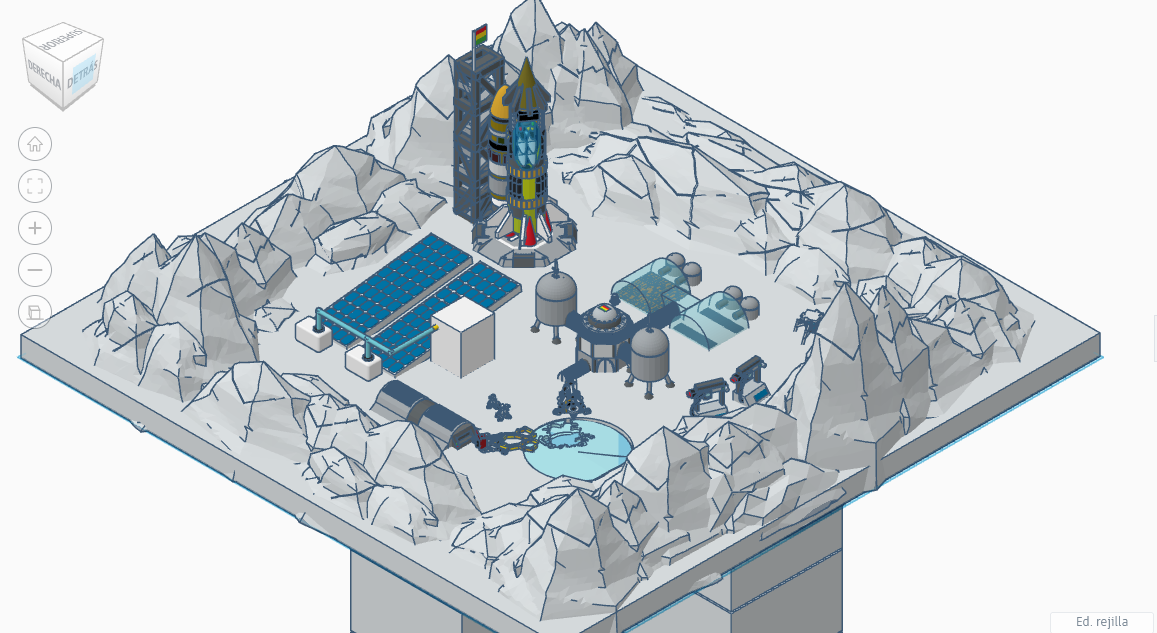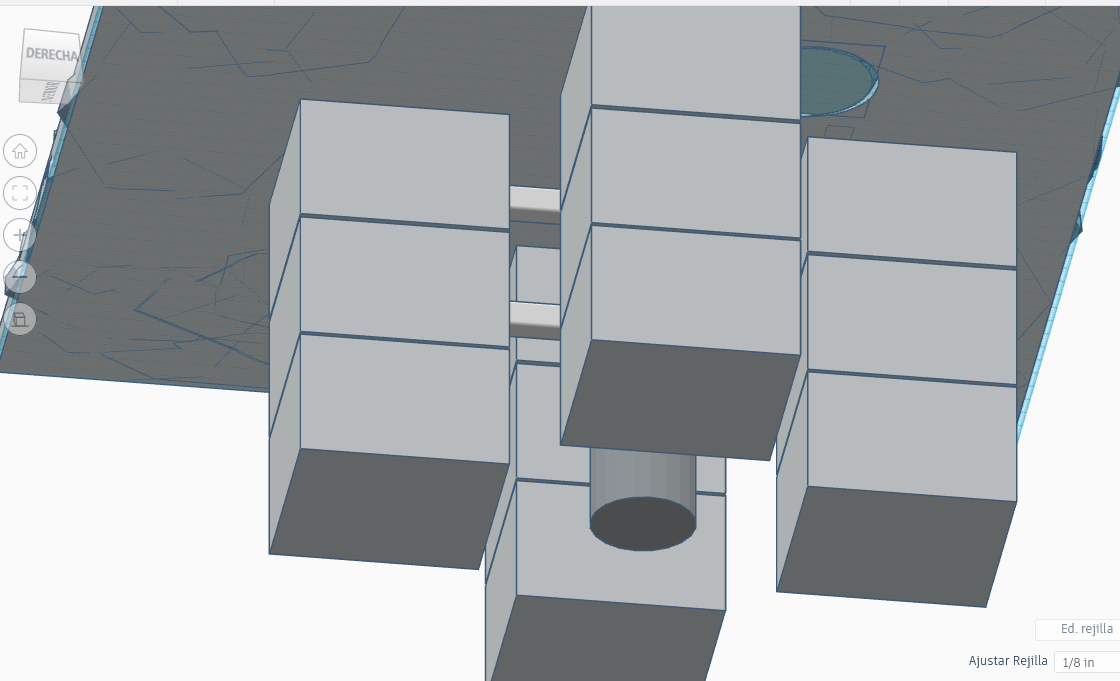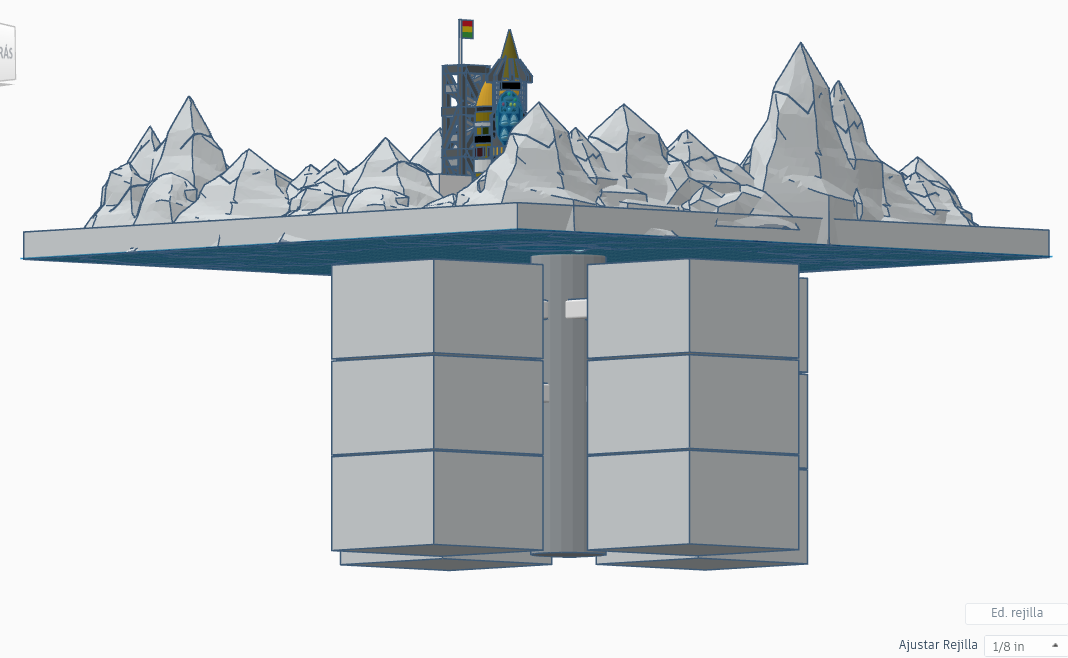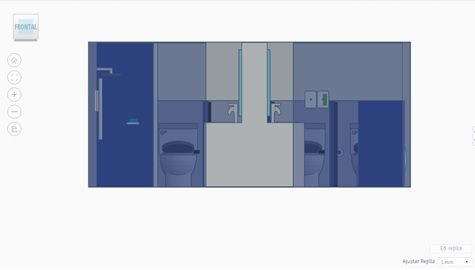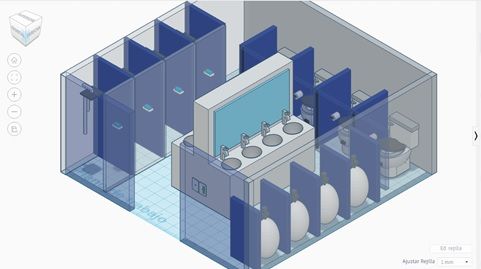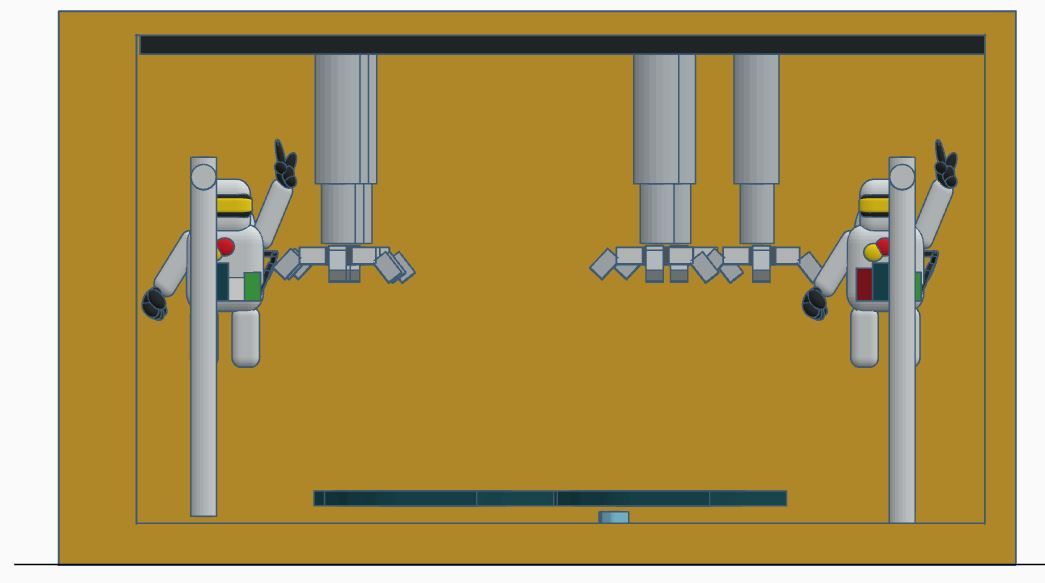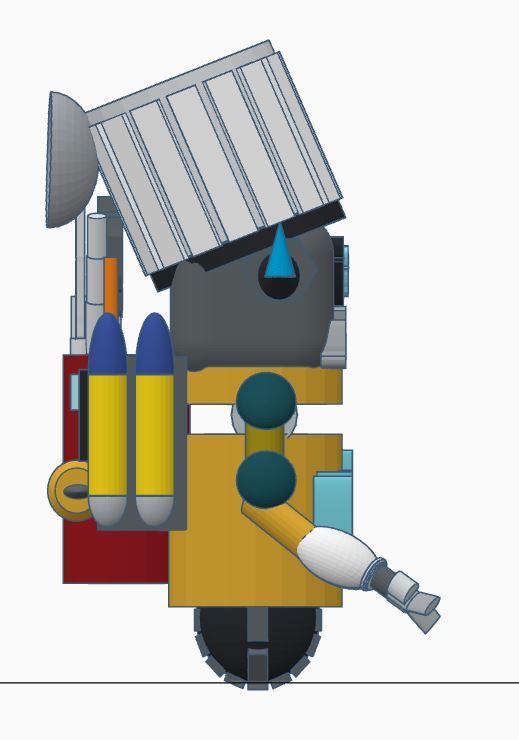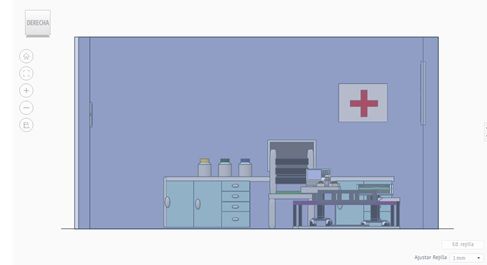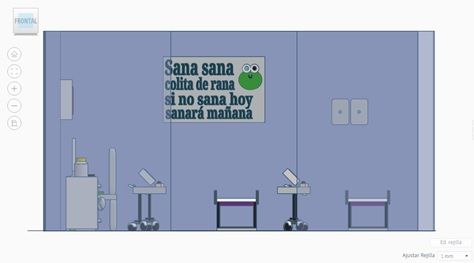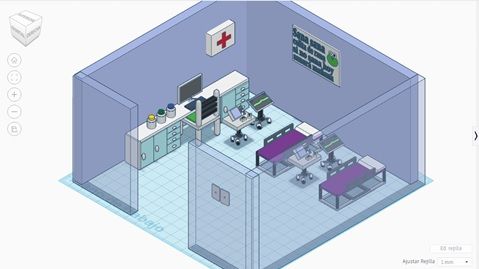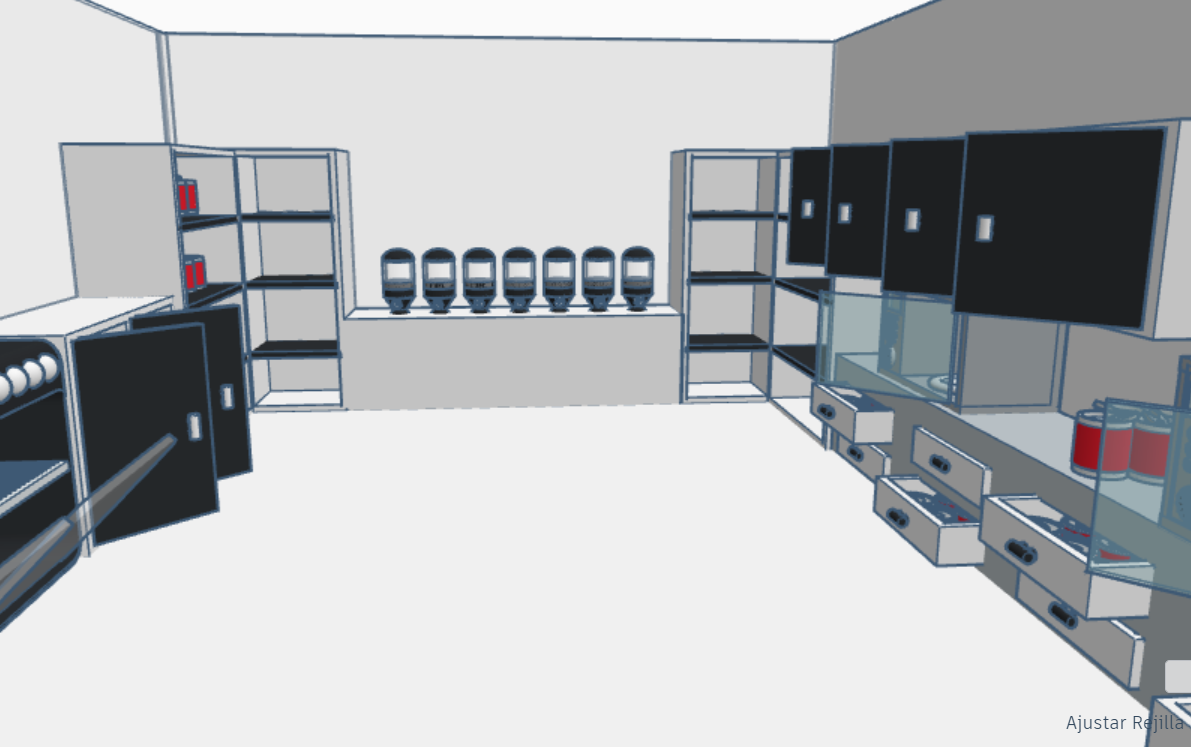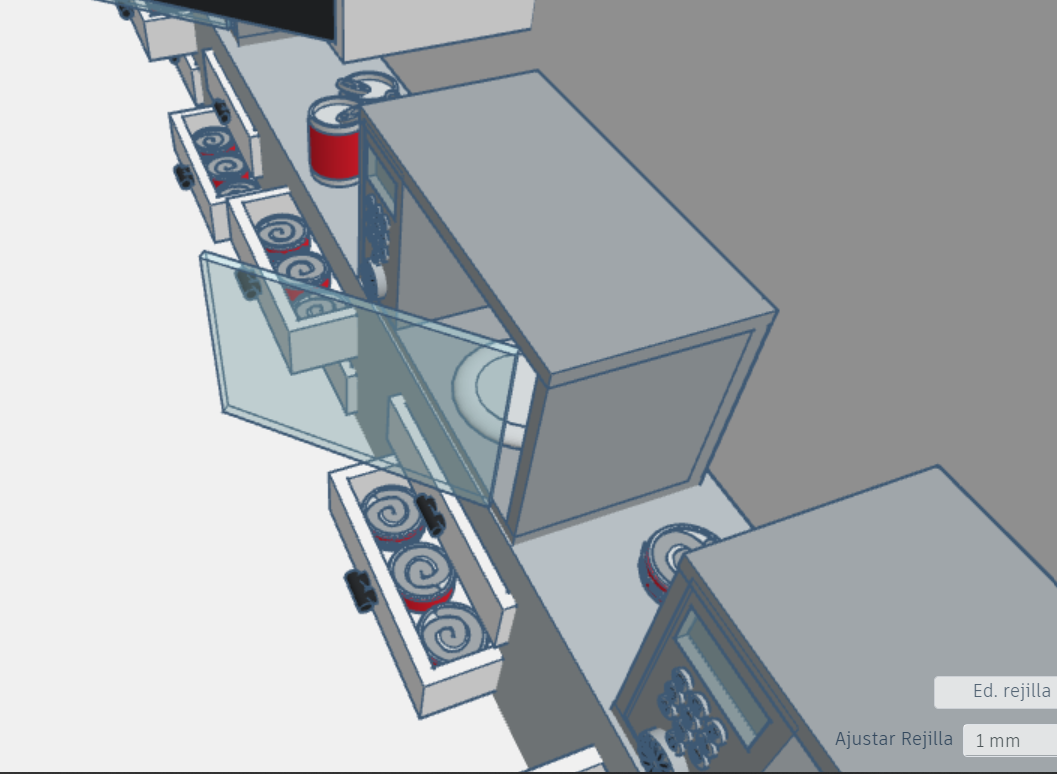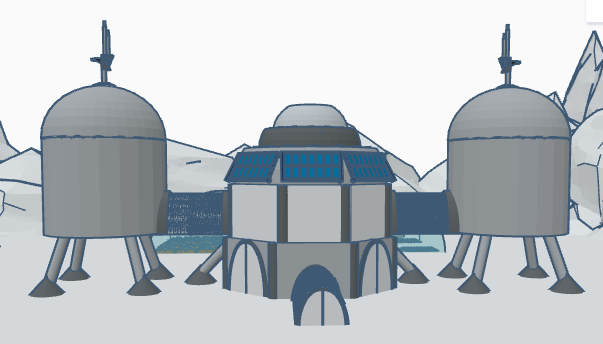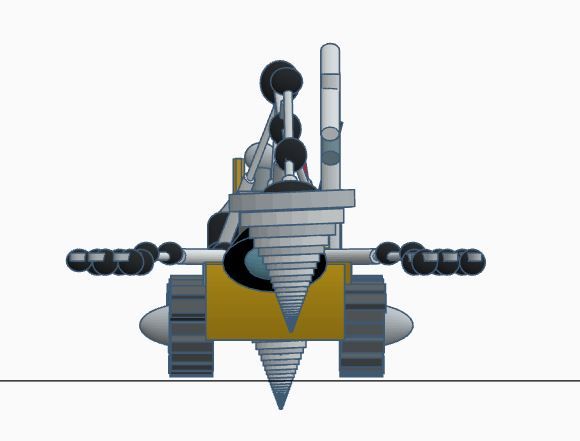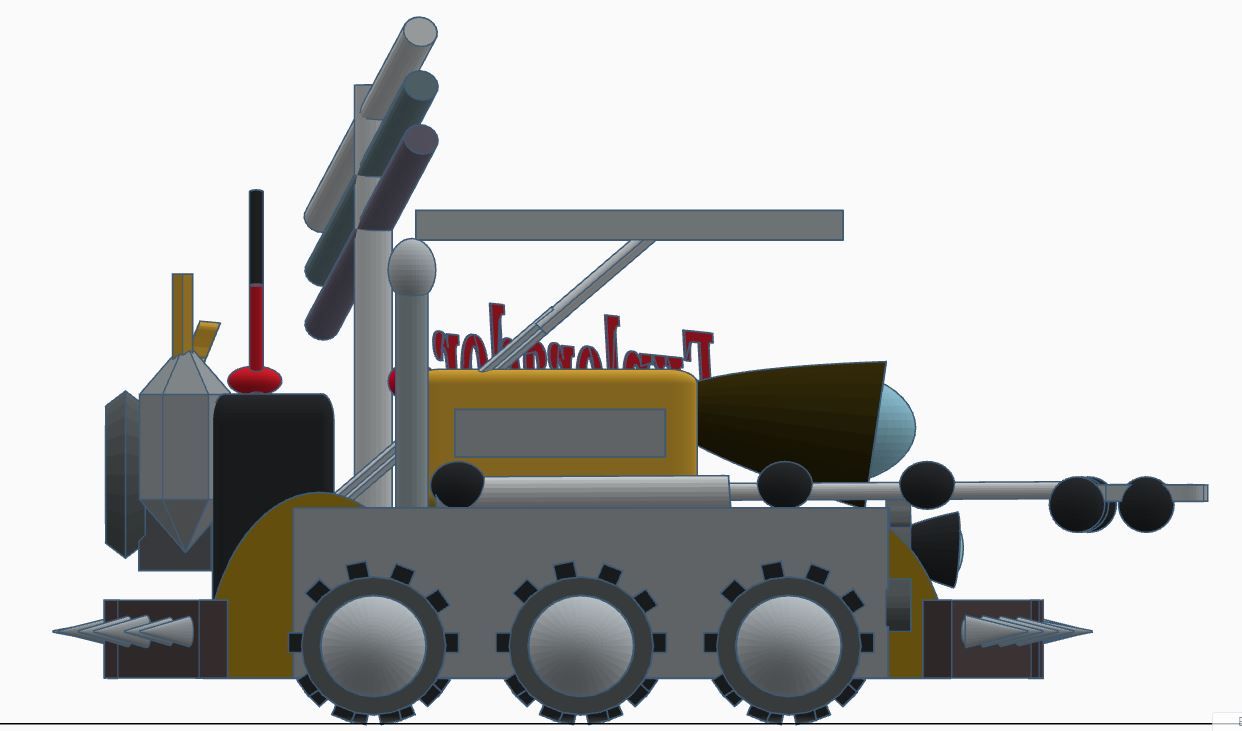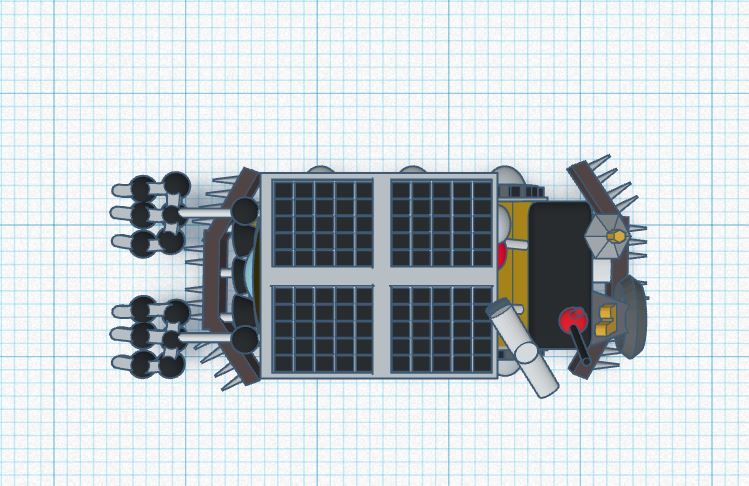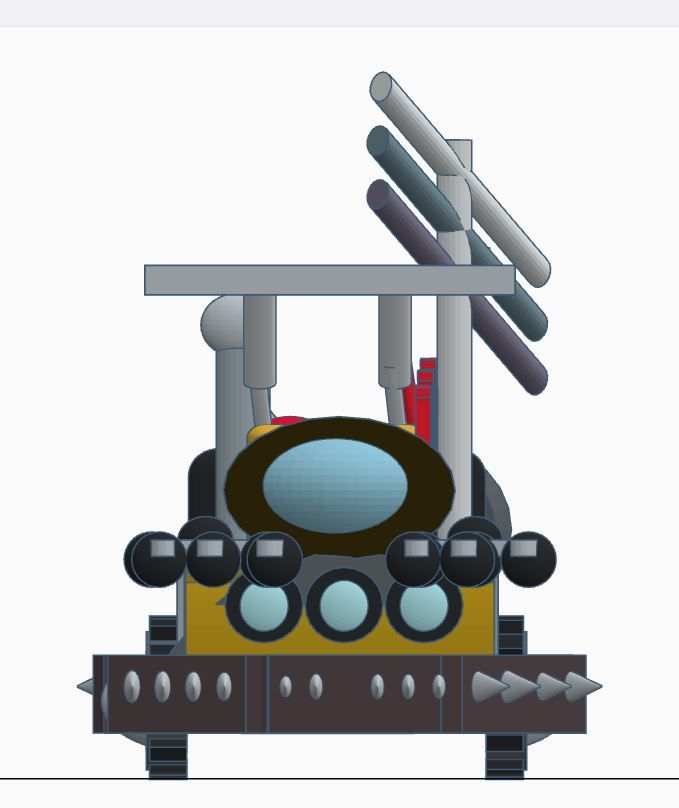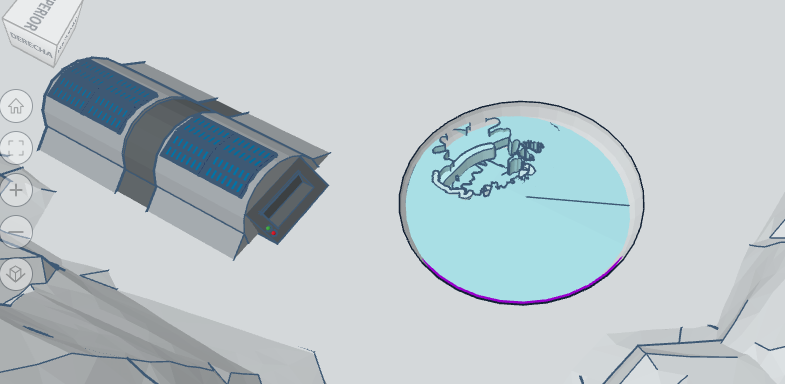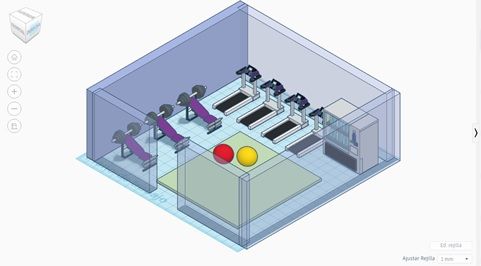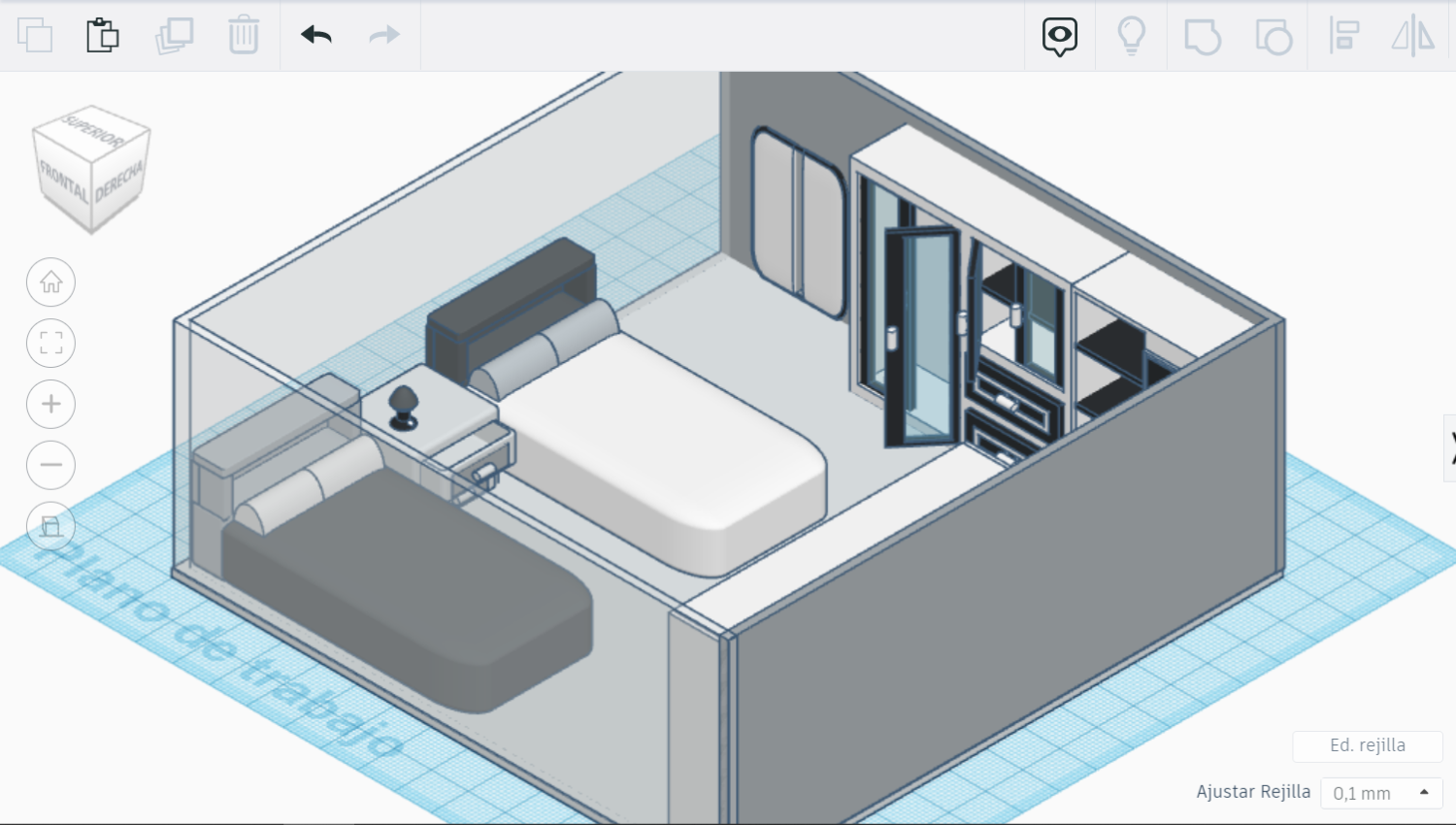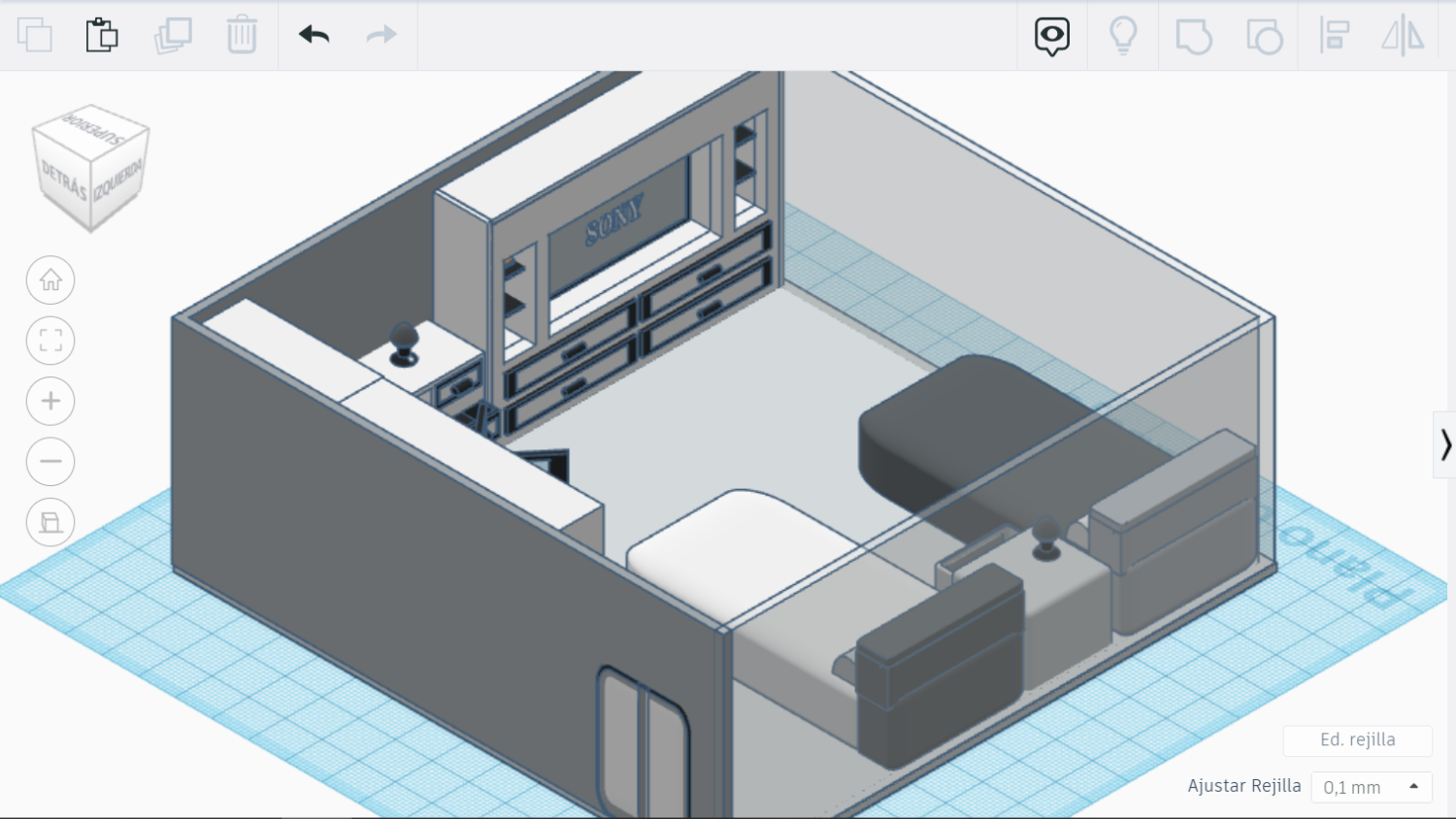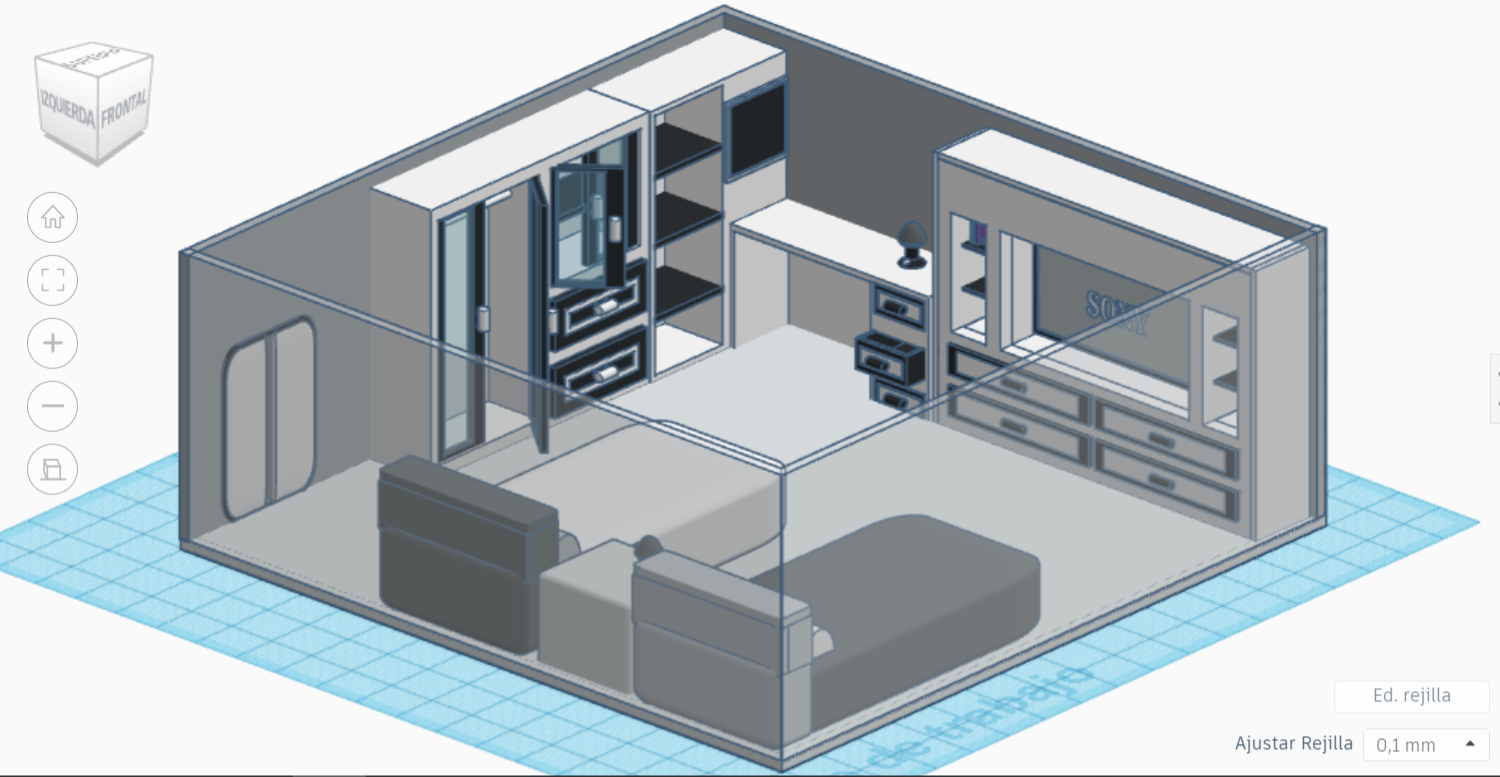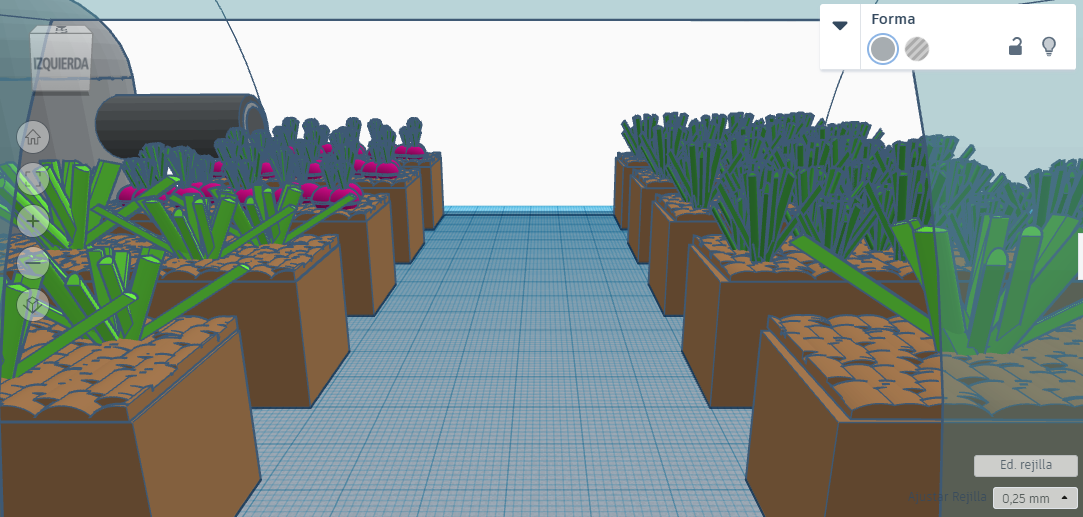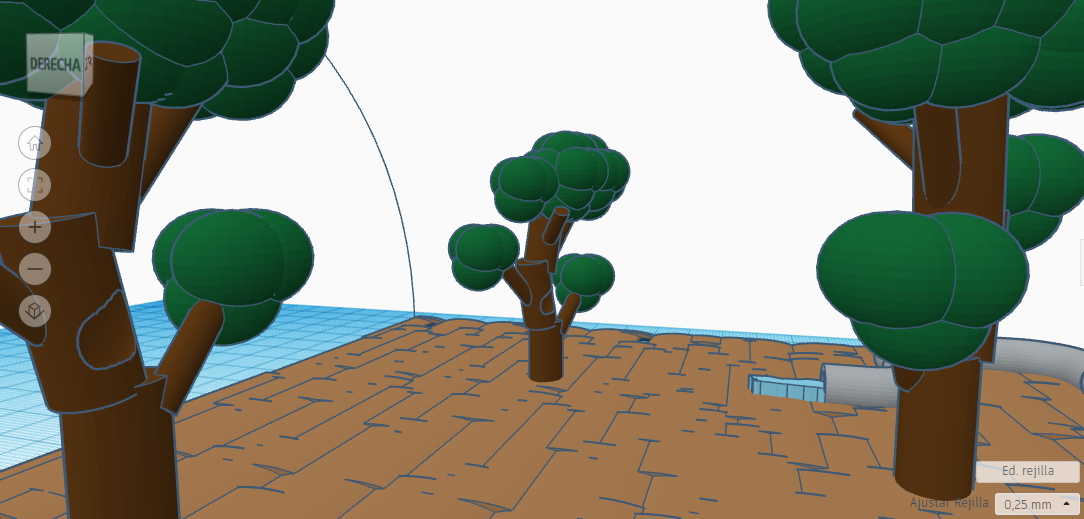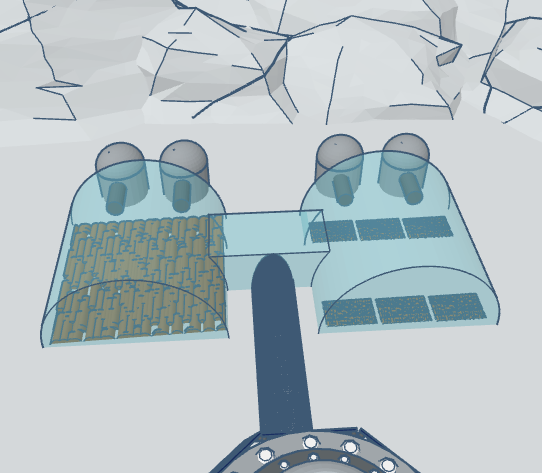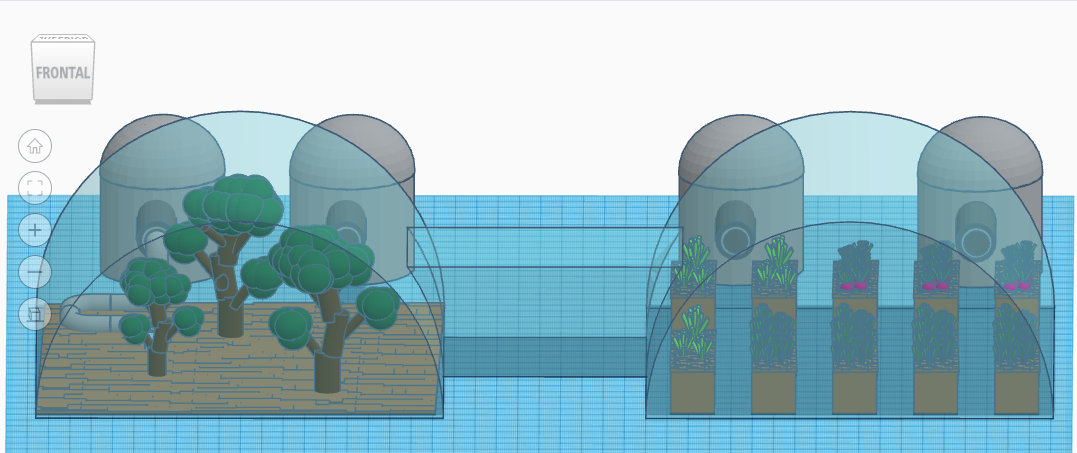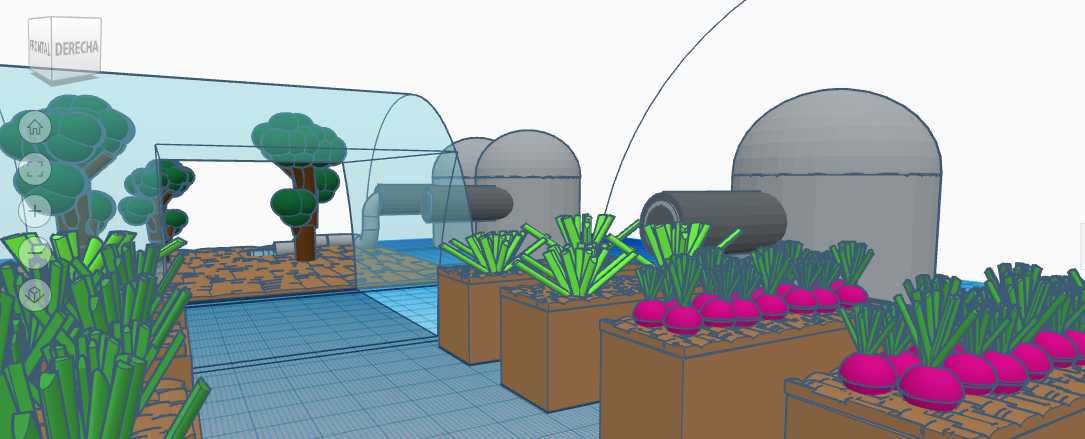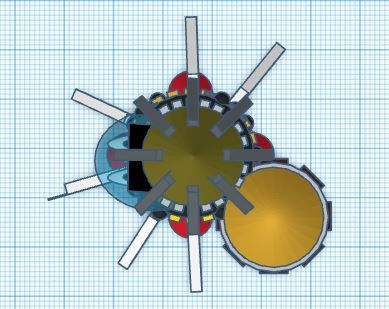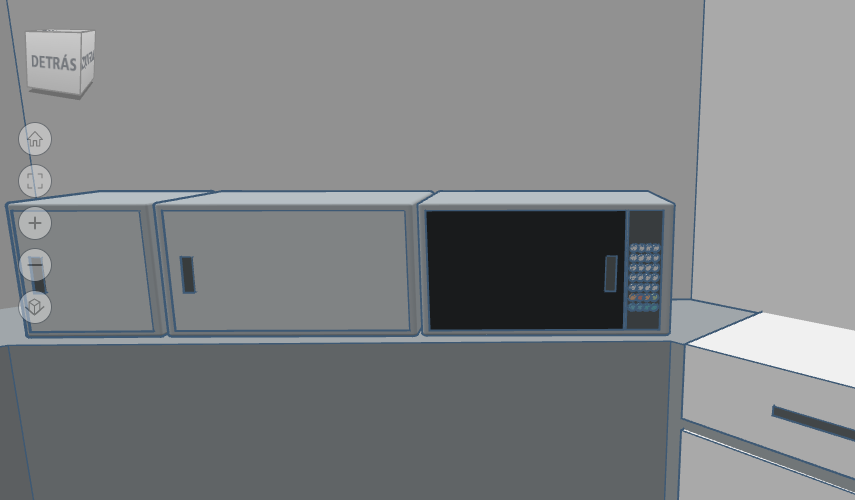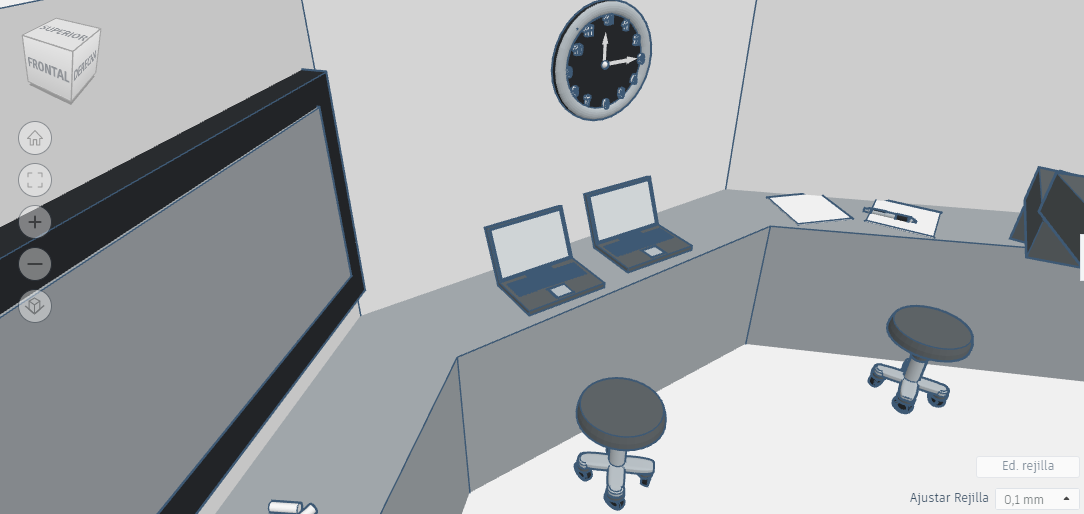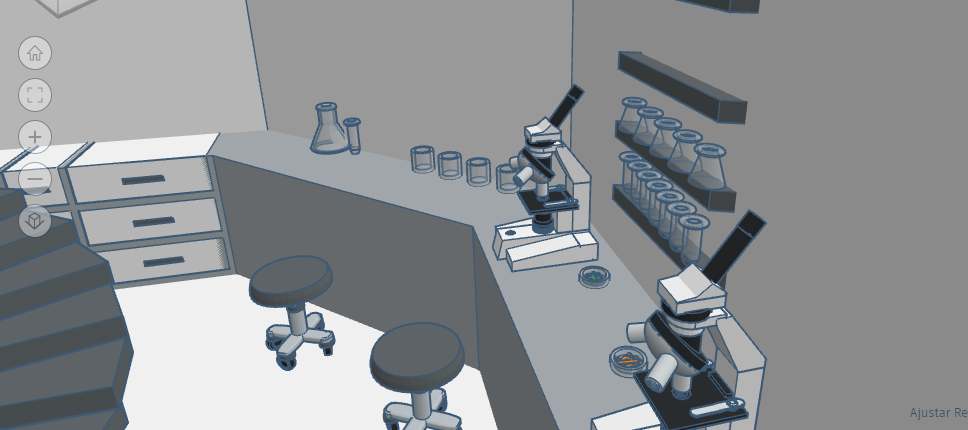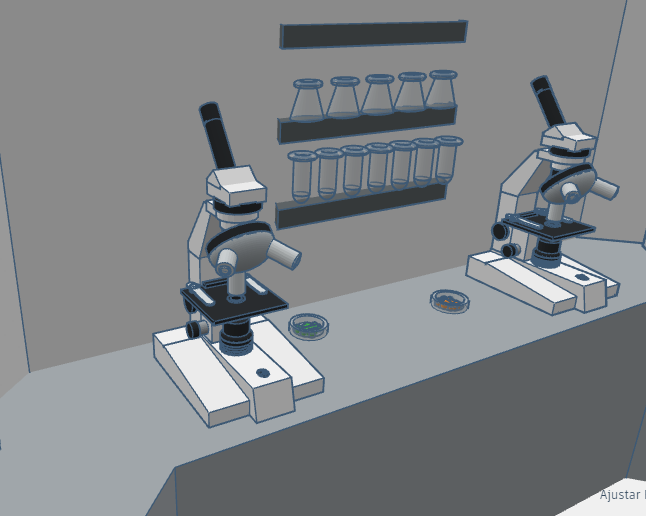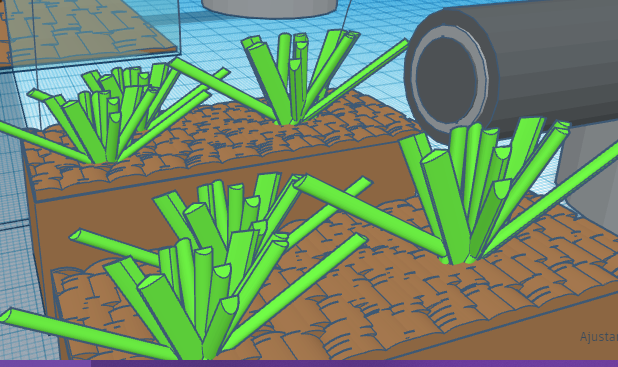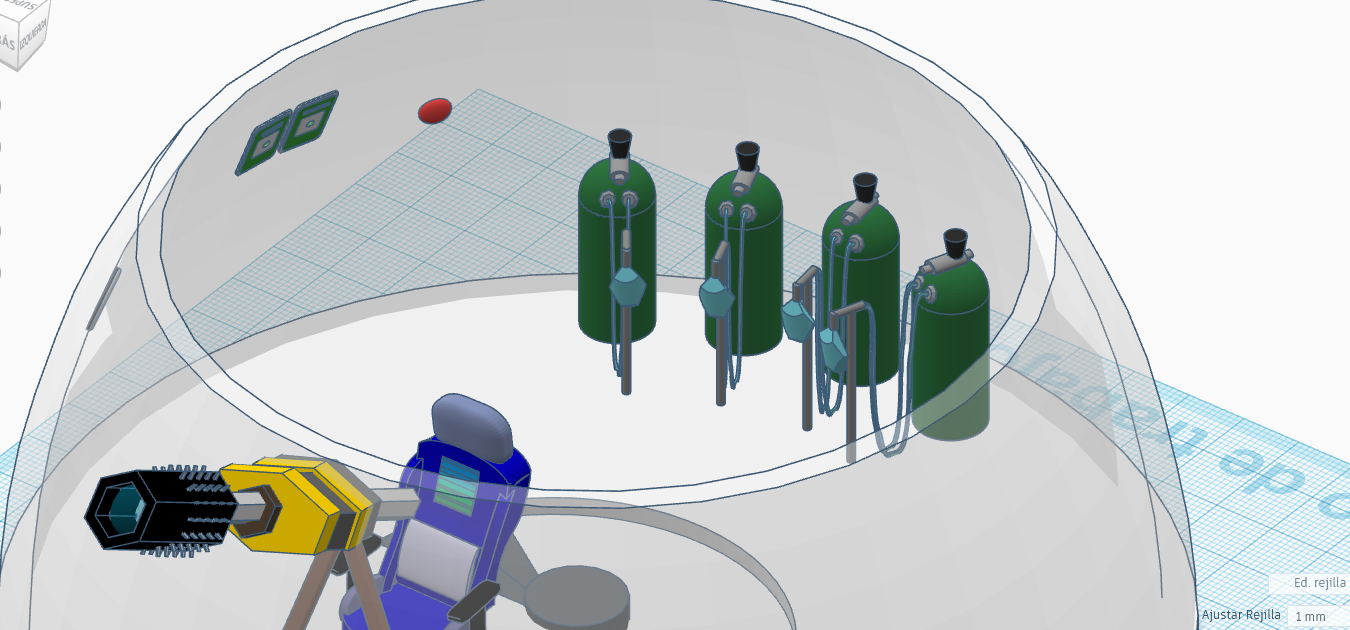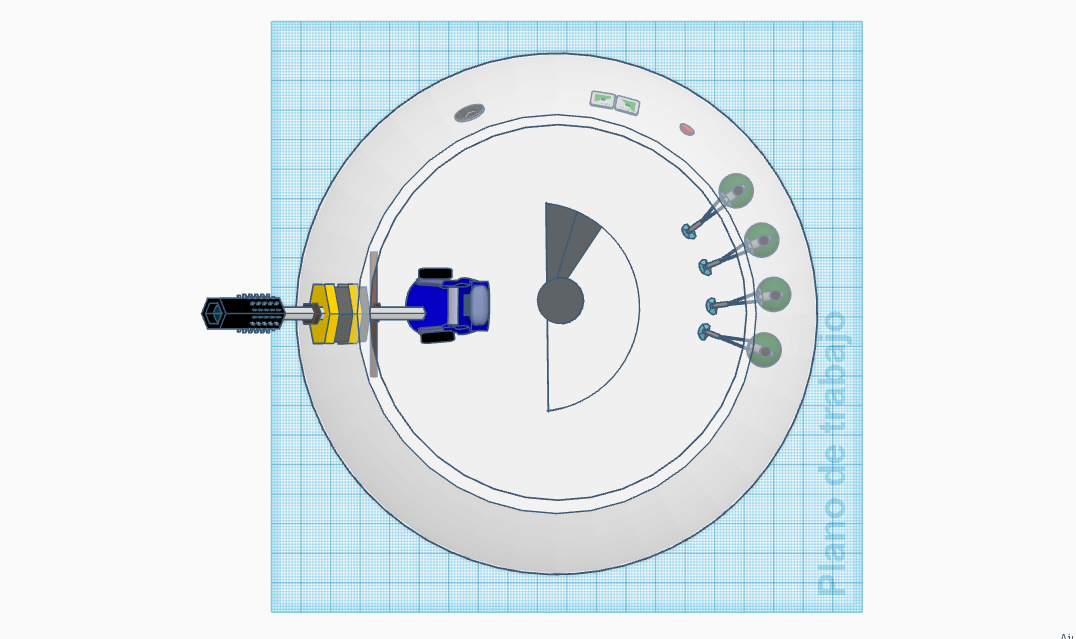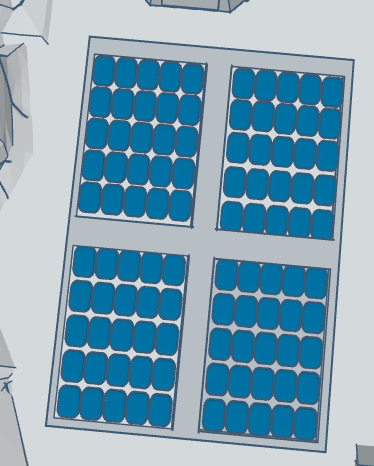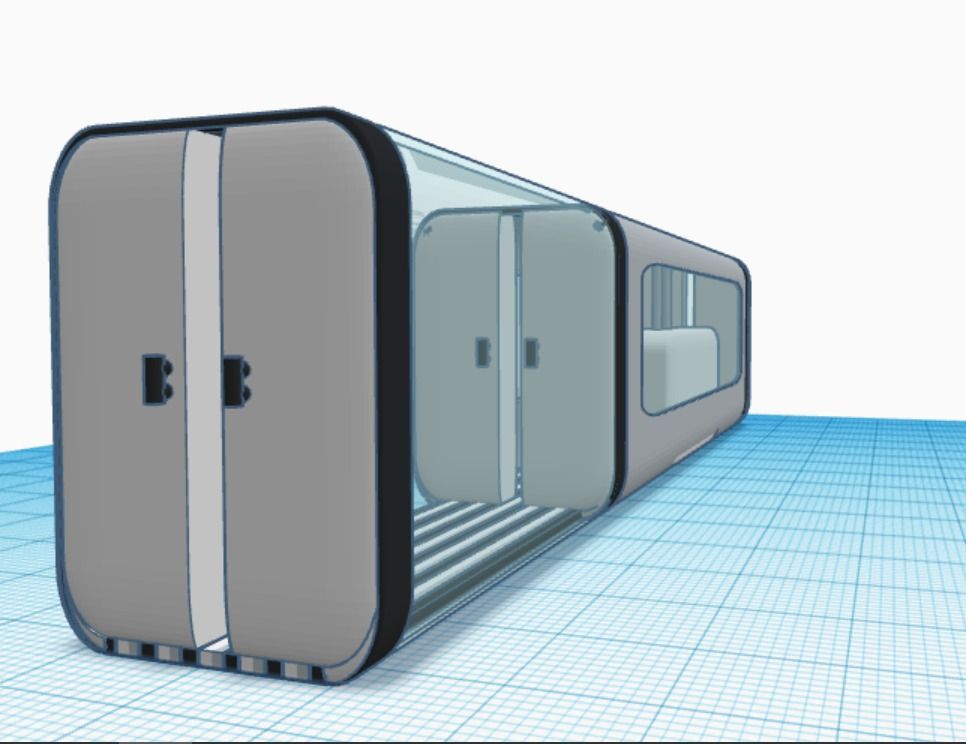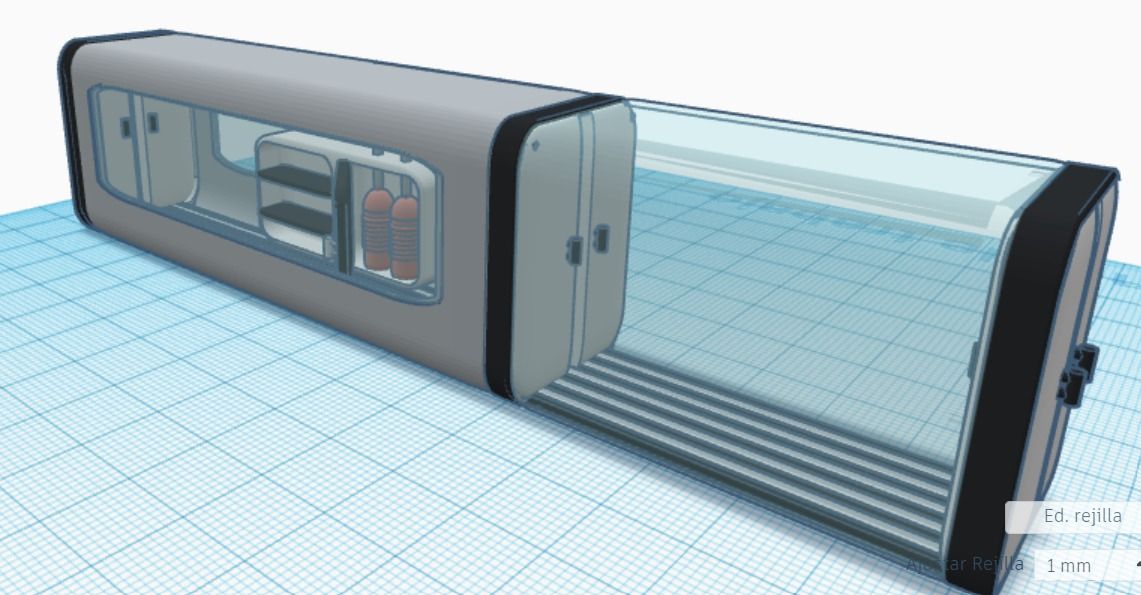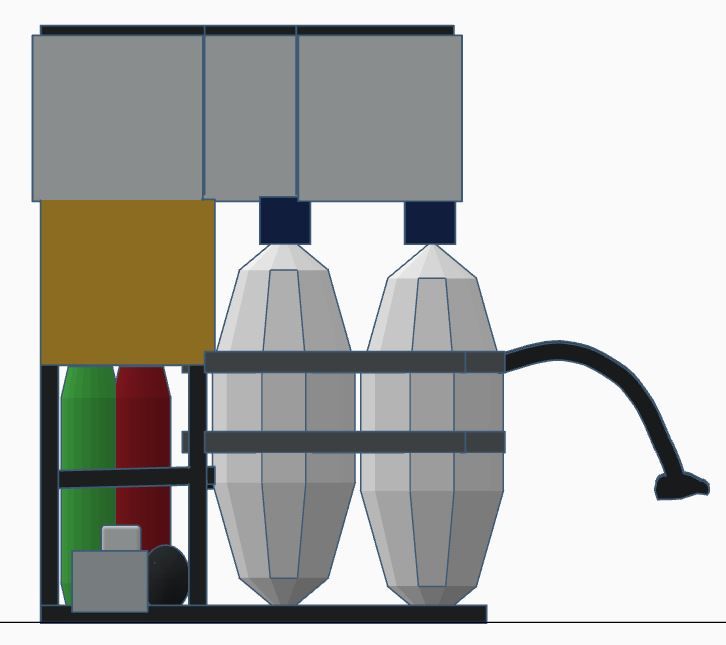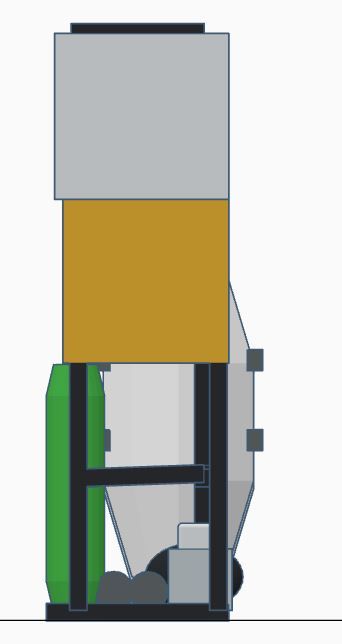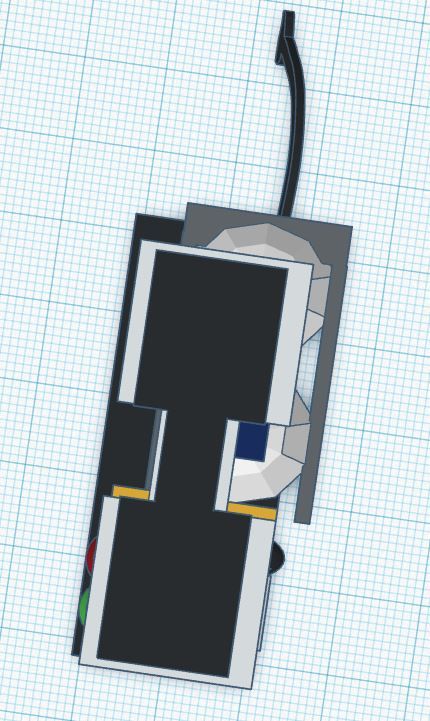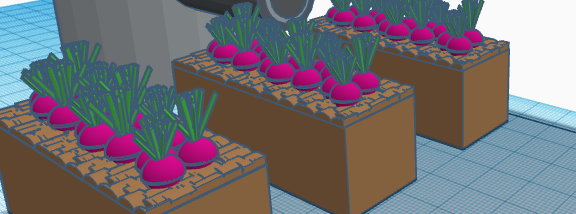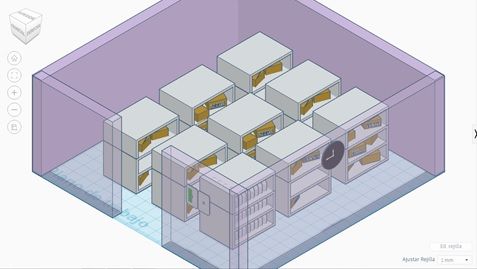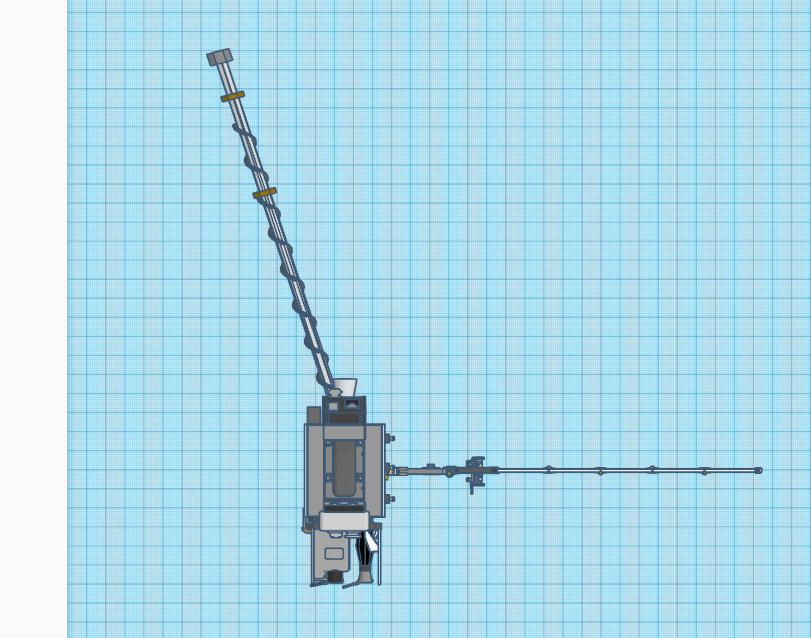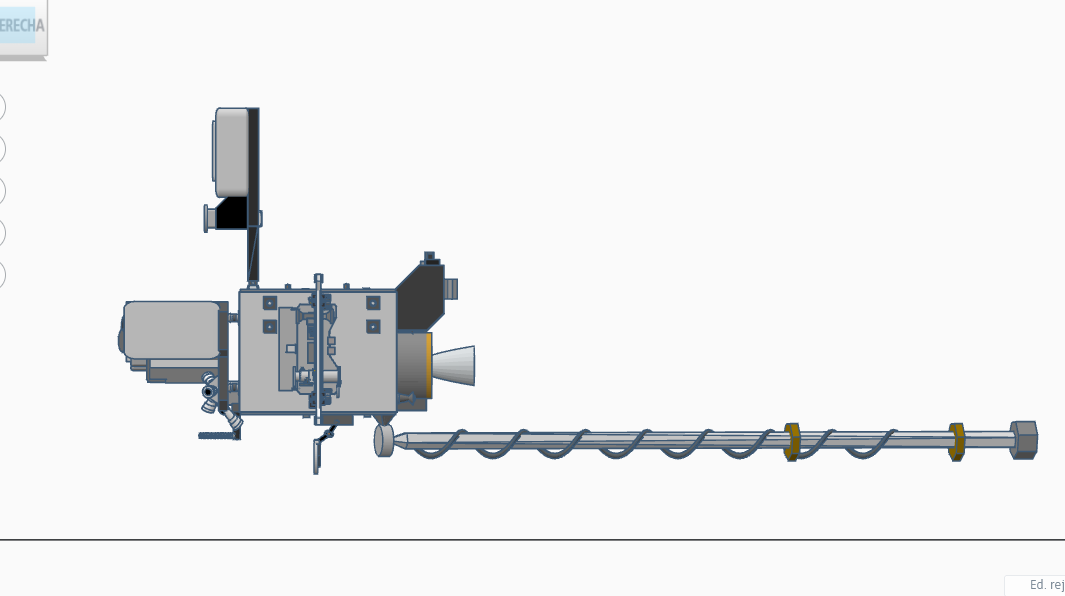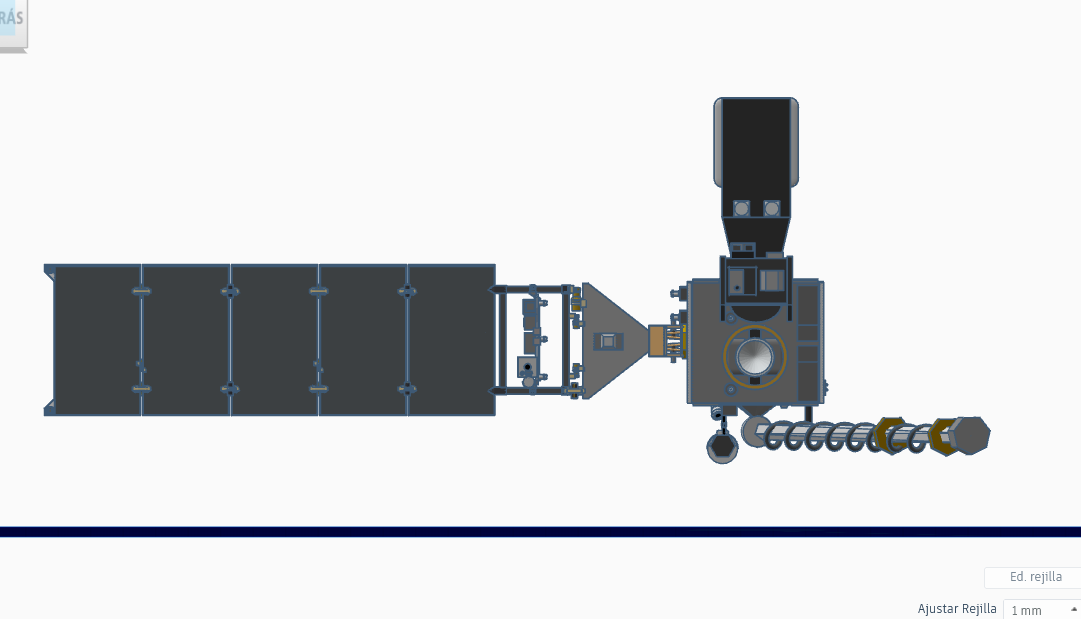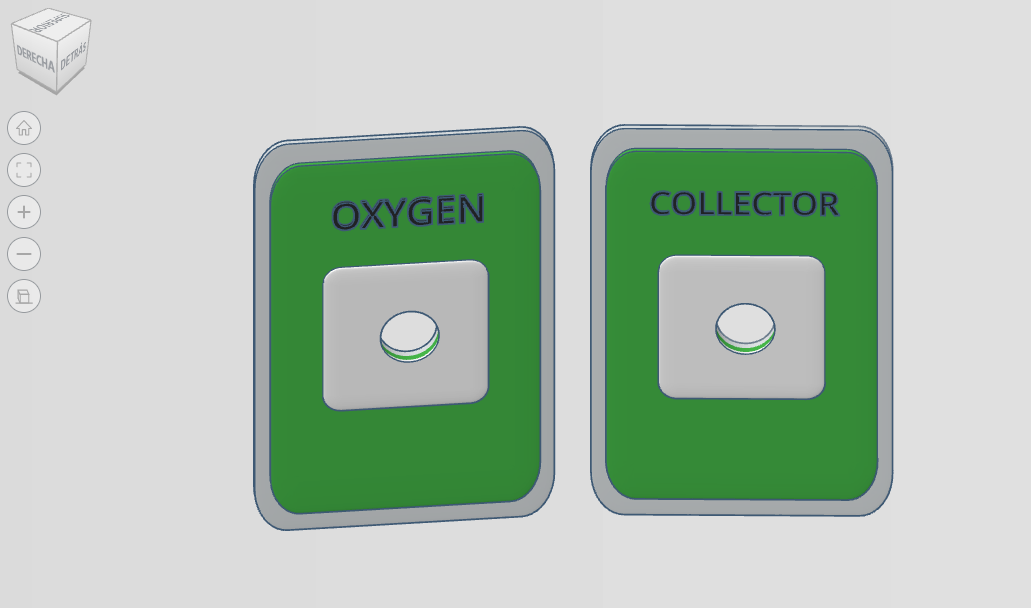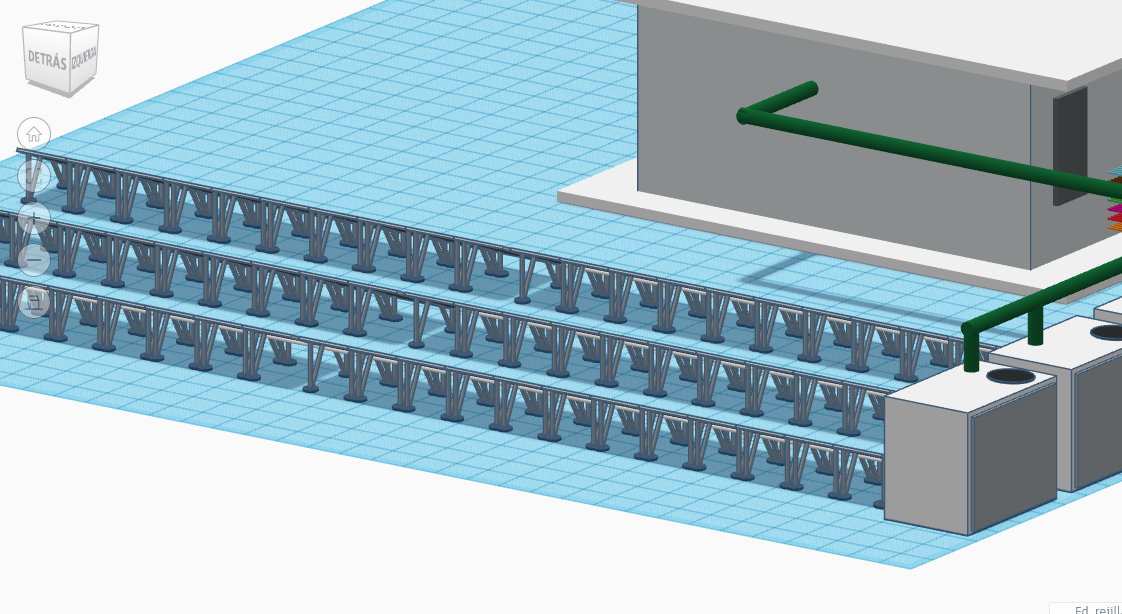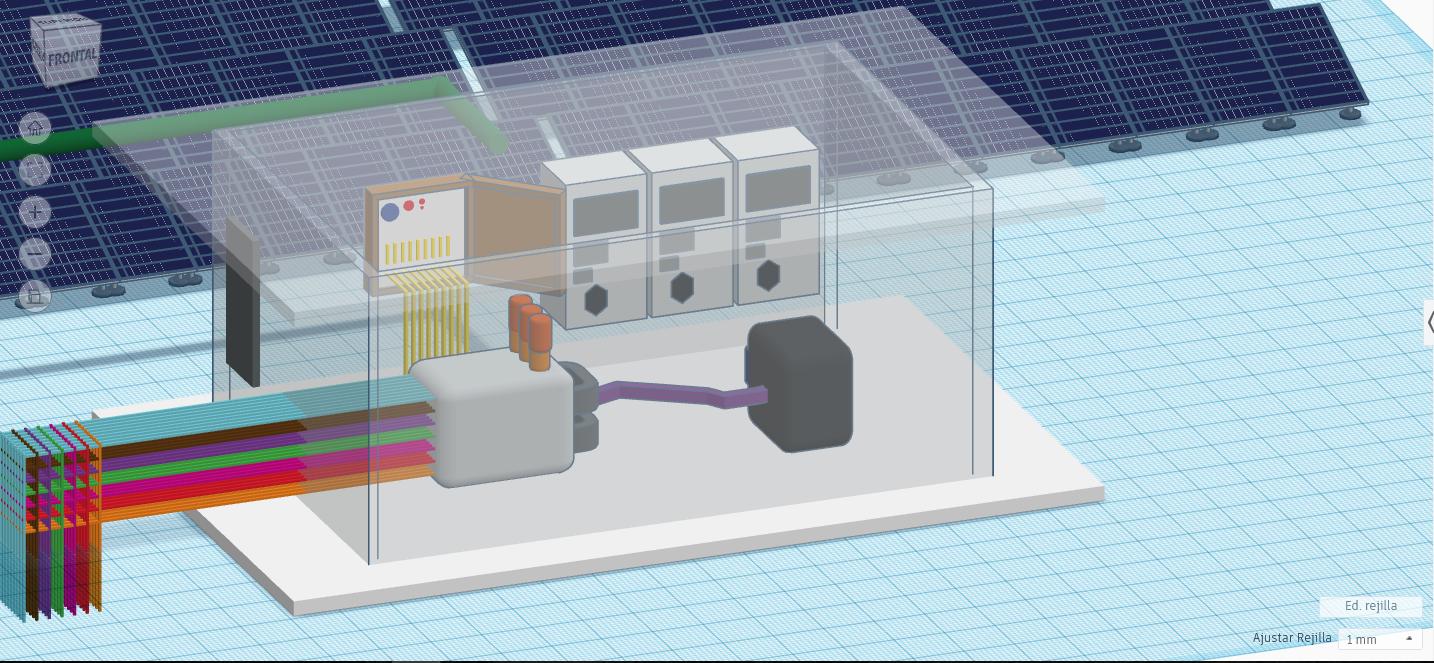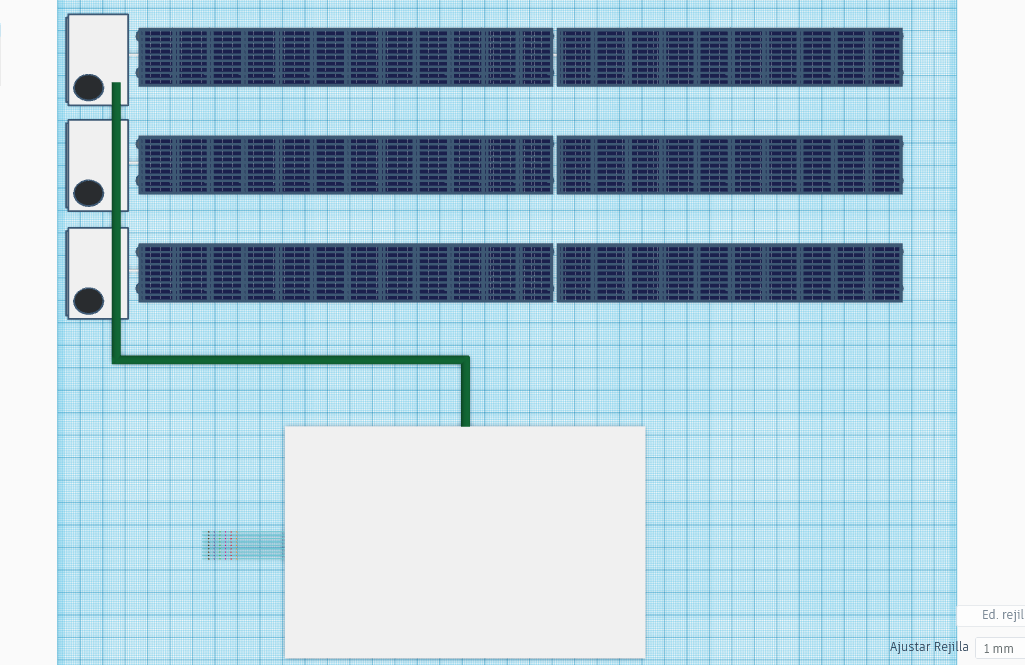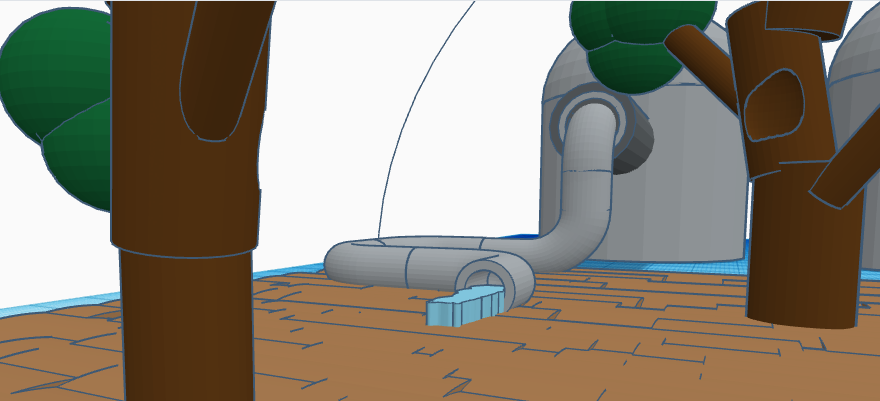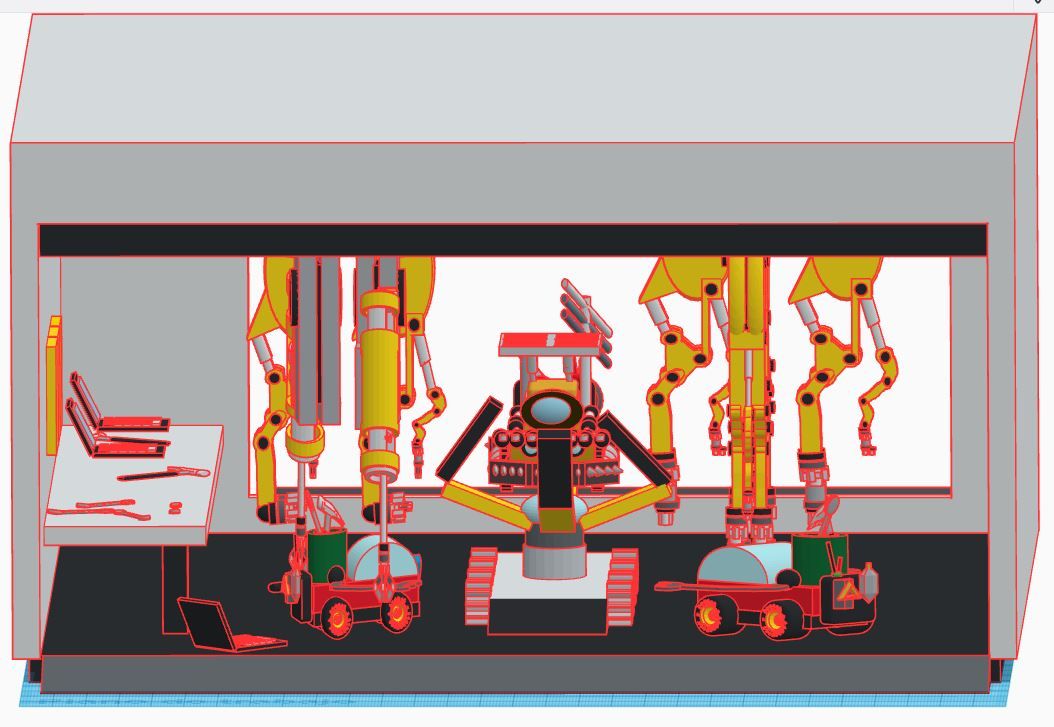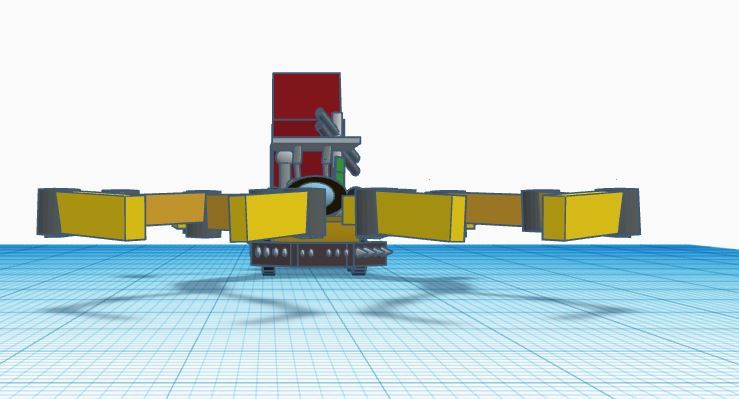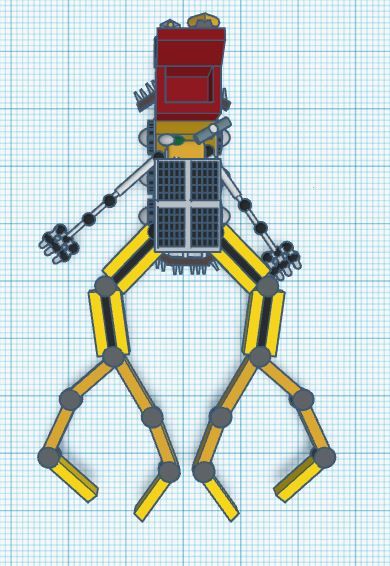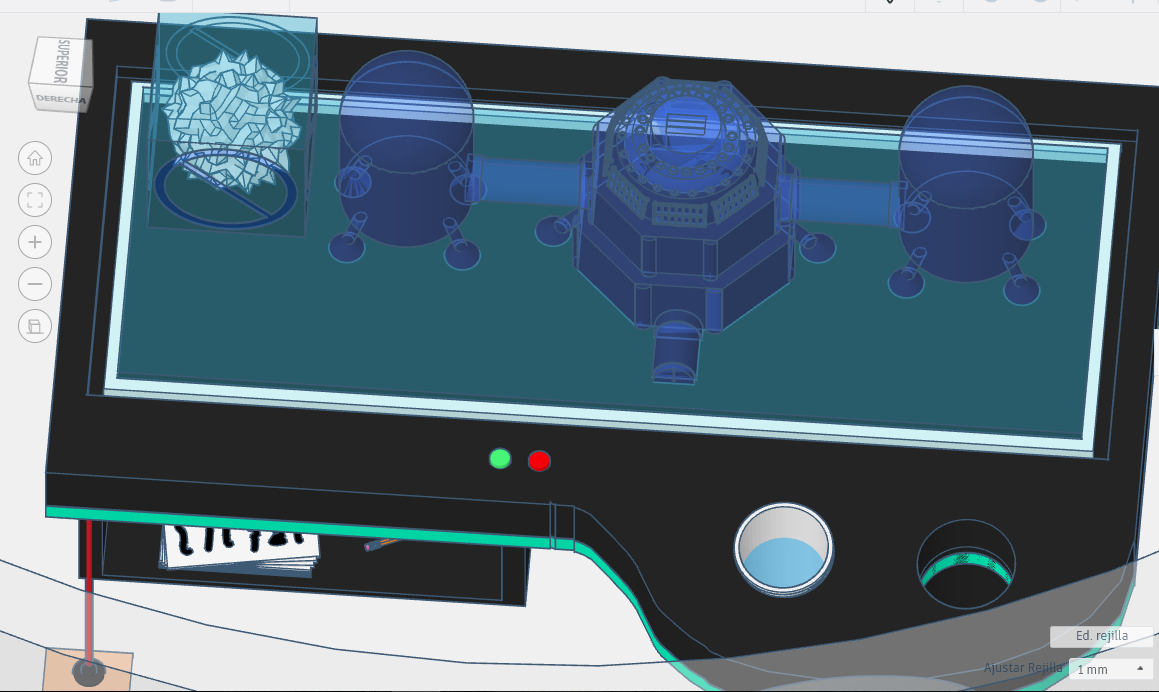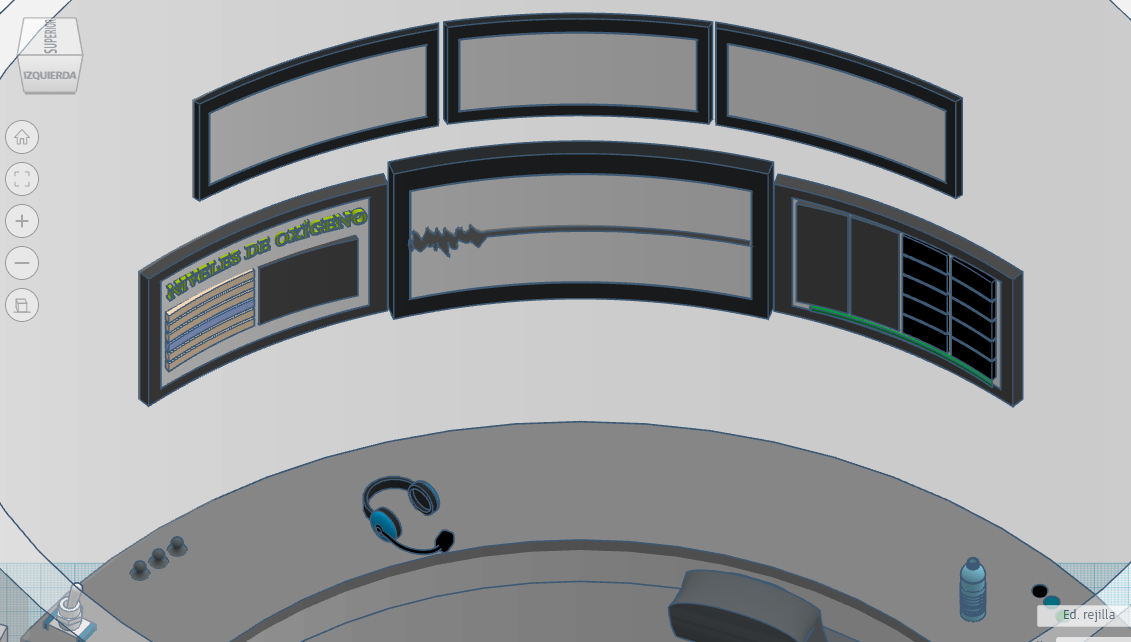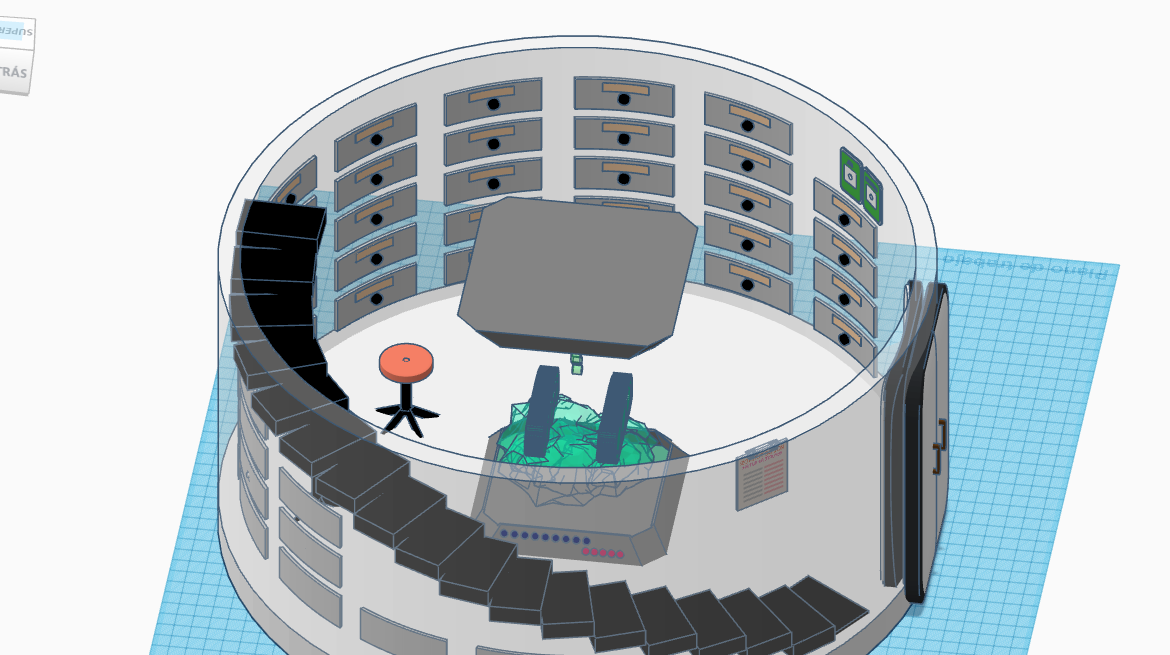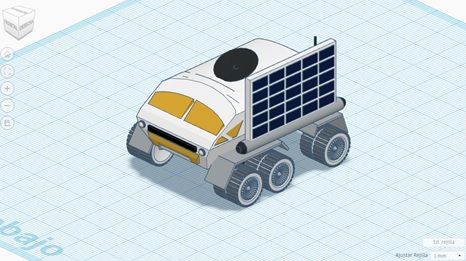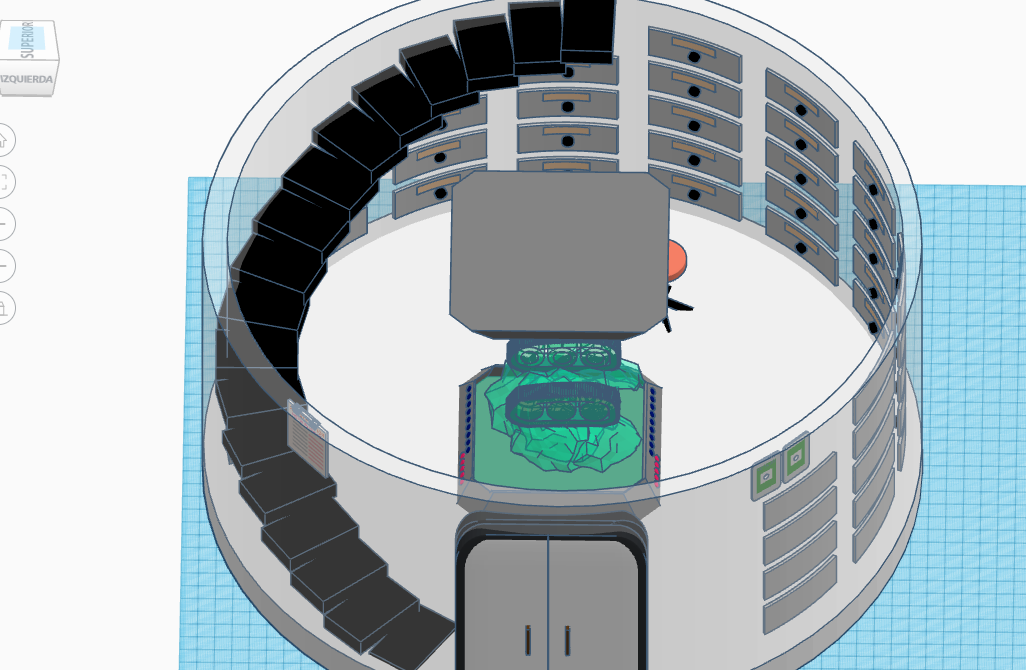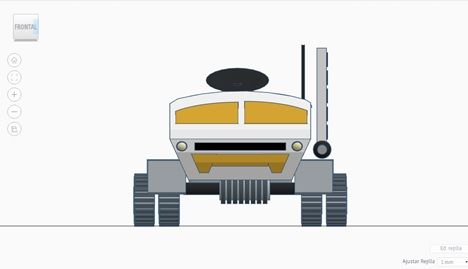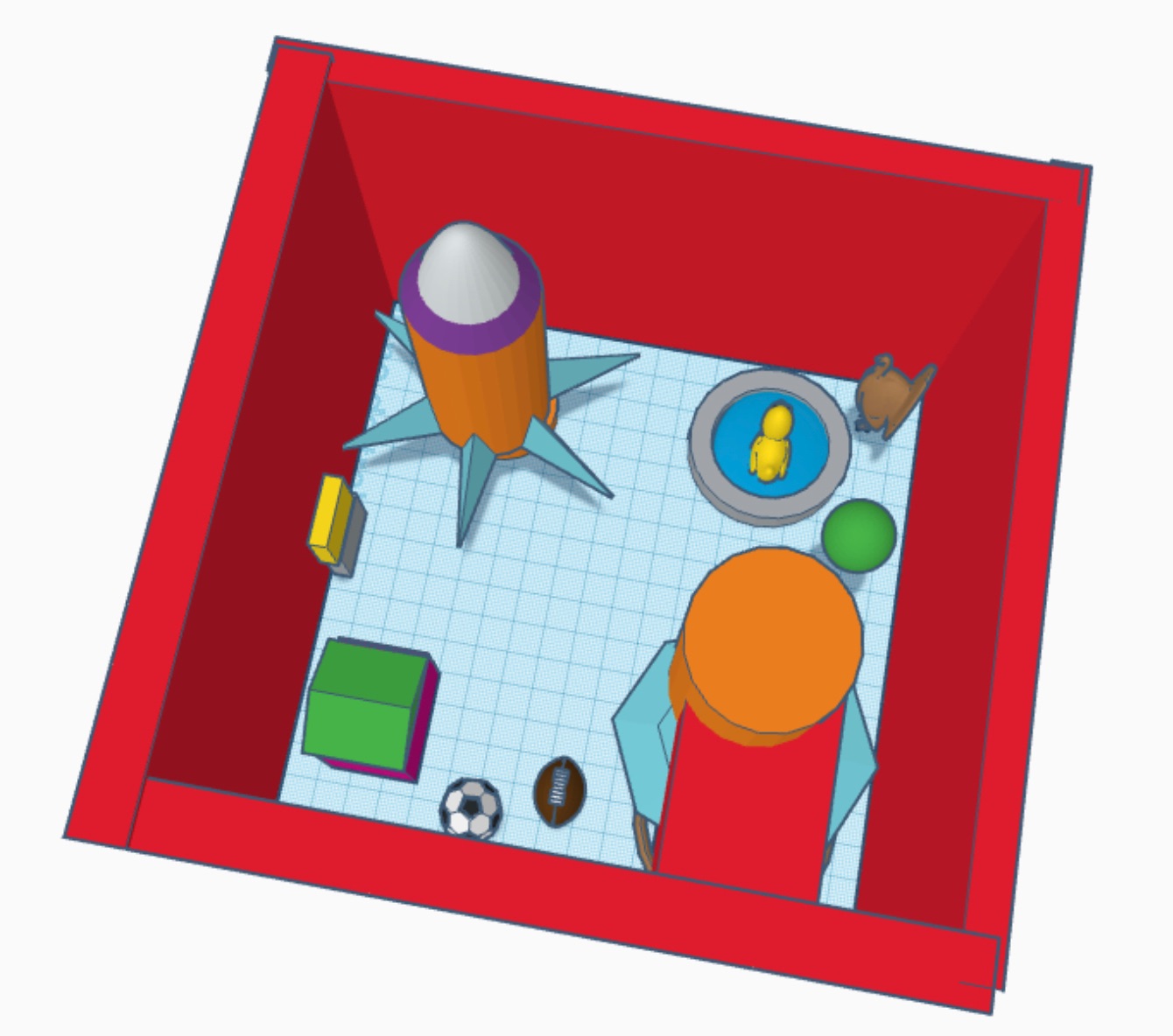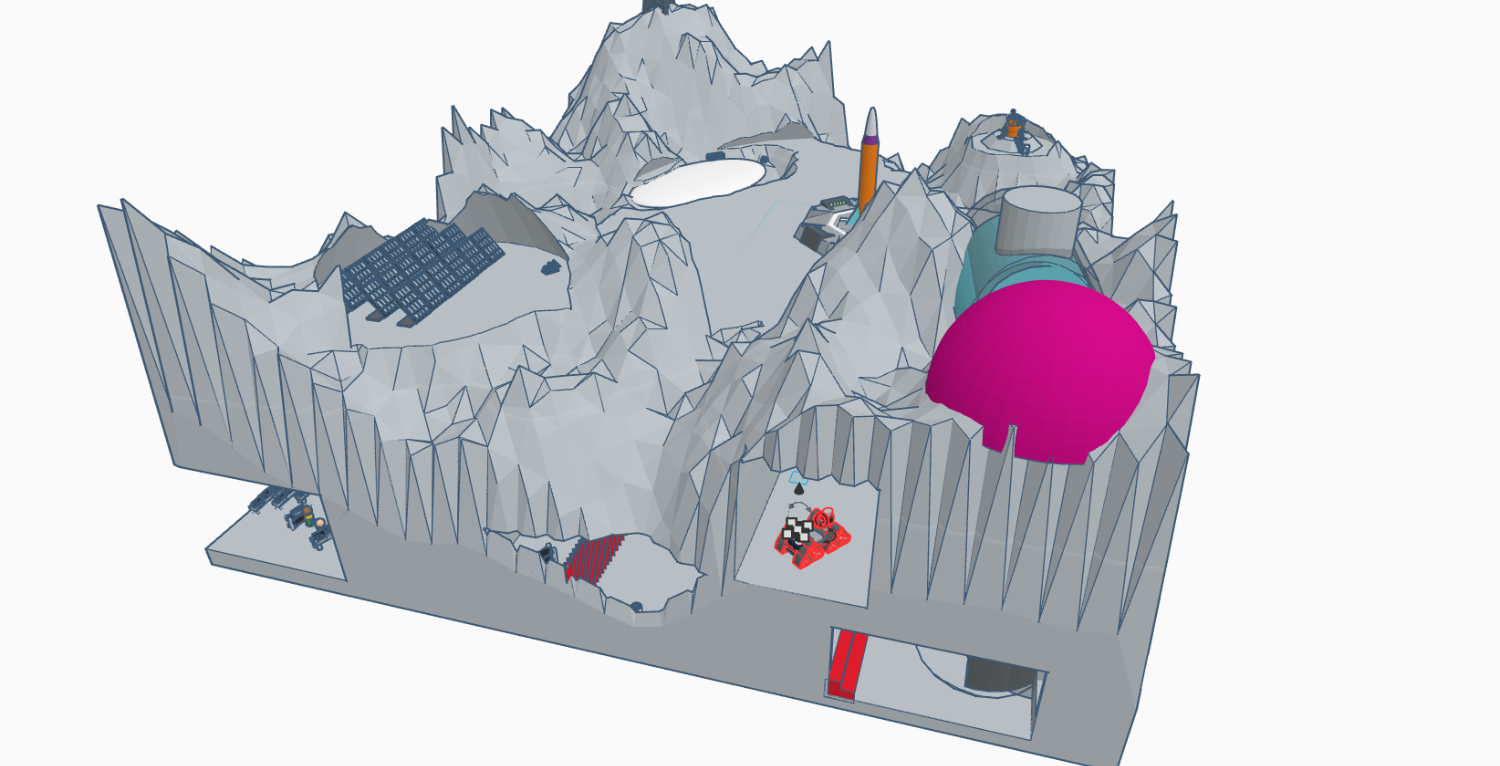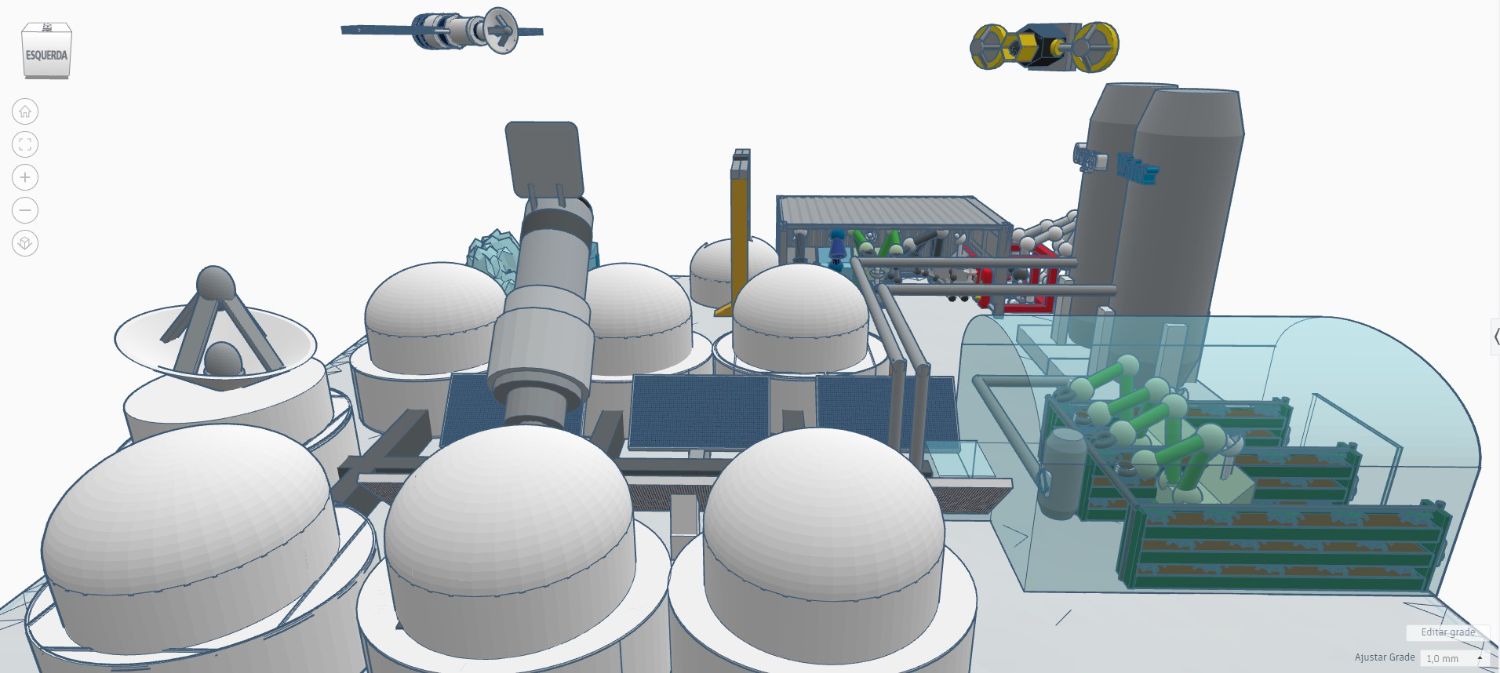Moon Camp Explorers Gallery 2021-2022
In Moon Camp Explorers each team’s mission is to 3D design a complete Moon Camp using Tinkercad. They also have to explain how they will use local resources, protect astronauts from the dangerous of space and describe the living and working facilities.
Team: Killa Wintata
FEPPA San Calixto La Paz Bolivia 13, 12 6 / 4 First Place – Non-ESA Member states
External link for 3d
|
Project description
Our Mooncamp base is called “Killawintata”, which means “Friends of the Moon”. This camp will have capacity for 4 astronauts, each one with particular tasks according to their specialty. The main objective will be to study the environment of the Moon, in search of a possible colonization. The station is located on the surface and underground. It will be divided into 6 sections: the first will be the monitoring section, which will control the entire camp. The second will be the health section, that includes nursery room, the gym and the entertainment room. The third comprises the research area, with state-of-the-art equipment like the rest of the establishment, where there will also be some sample-collecting robots (DUM-E and GRIPER) and others that will help with the maintenance and repair of the station. The fourth is the resource supply section, made up of different electricity, oxygen and water systems. Finally, the last section will be the daily habitat, where bedrooms with their dependencies will be installed. These sections will be interconnected with each other. The regulation of the temperature of the complex will be obtained through the multilayer system, which will be made of aluminized Mylar that covers the external surface of the station, its purpose is to prevent solar thermal radiation from entering, as well as the cold of space. The project has a cleaning and purification system at the station entrance and in other places. The station is designed to be self-sustaining. An emergency escape pod is also planned. |
||||
|
Where do you want to build your Moon Camp?
Crater Peary Why did you choose this location?
Peary Crater was chosen because its relatively flat interior would aid in camp construction, plus the northern rim is permanently exposed to the sun and the southern third of the interior in shade. With this arrangement there is the possibility that on the side exposed to the Sun, solar panels can be installed that provide sufficient and permanent energy, necessary to obtain water deposited in the form of ice, in the shadowed part of the lunar North Pole. This ice deposit would serve as a source of water and oxygen necessary for the existence of life on the Moon. How do you plan to build your Mooncamp? Which materials will you use?
The construction will take a long time since it will be necessary to transport material from the earth several times and extract resources from the Moon. The robotic teams with 3D printing techniques and automation will be the workers sent from the earth, resources such as lunar dust and sulfur will be mixed to be used as construction material. In a second stage, the station will be covered with a multilayer insulation material and finally, with the assistance of the robots, the entire station will be covered with regolith for protection against radiation and micrometeorites. |
||||
|
Water
|
Food
|
Electricity
|
Air
|
Protection
|
|
In our location we can find abundant blocks of ice to generate water from the following process: The ice blocks would be transferred to some cauldrons where they will be thawed, filtered and made drinkable and in their liquid form they will be taken to the tanks, located in the part underground. From these storage tanks it will be transported to the entire station. In the location of the crater, the fall of micrometeorites is unlikely, however, the ice collectors will be automated robots that can be exposed without risk of human loss. |
Inside the space station we can find two greenhouses. One of them for the cultivation of fast-growing vegetables: radish, lettuce, spinach, carrot, potato, among others. In addition to these we will also have various cereals in cultivation for the protein diet. In the second greenhouse we will have the plants that would be under constant study to check the needs they present for their survival on the Moon. The greenhouses will be totally sealed except for a burst of carbon dioxide that will spray the plants from time to time, through an automated system. In addition to having a system for collecting the pure oxygen that the plants emanate, which will be transported to a tank for later use and administration. |
At one end of the space station we will have solar panels that will carry all the energy to the different sectors of the camp, recharging from solar energy. The solar panels will be located in a place where the sun will not stop giving energy, but if it is not possible to receive energy from the Sun, the energy will be reserved and stored in batteries, so that they are ready for later use. In the case of the lunar cars called “Transformers” they will still receive sunlight, but otherwise, the batteries will be used. |
Half of the water storage tanks will be transported to the oxygen generator, which, through the electrolysis process, provides us with enough oxygen for the entire station. The water would be directed towards a tank where there are two containers, in each of them respectively, a positive and negative electrode both connected to a battery. When passing the energy these separate the hydrogen and oxygen from the water. So this would give us enough oxygen for the whole season, but in case it doesn’t we will have, within the reserve supplies, individual tanks available for use. |
Most of the structures that are above the surface must be covered with regolith and thick anti-radiation walls. |
|
Describe a day on the Moon for one of your Moon Camp astronauts
Knowing that a lunar day lasts fourteen Earth days, and in order not to alter the circadian cycle of the human being, we would have to simulate a day of 24 Earth hours for the inhabitants of the lunar station. 7:00 – 7:30 Personal hygiene. 7:30 – 8:00 Nutritious breakfast prepared by robot chefs. 8:00 – 9:00 Intense physical exercise in order to maintain the cardiovascular system, prevent muscle atrophy and bone loss. 9:00 – 11:00 Astronauts’ own work according to their specialty. 11:00 – 11:30 Refreshments. 11:30 – 13:00 Work assigned to each astronaut. 13:00 – 14:00 Nutritious lunch previously prepared by a nutritionist and served by the robot chefs. 14:00 – 15:00 Rest. 15:00 – 16:00 moderate physical exercise and recreational games in the entertainment area. 16:00 – 16:30 Snack. 16:30 – 19:00 Maintenance of equipment in all sections of the station. 19:00 – 19:30 Daily report to Earth. 20:00 – 07:00 Break. Every day there will be a person on duty in charge of monitoring the operation of all the station’s equipment, especially those that provide oxygen. |
||||



